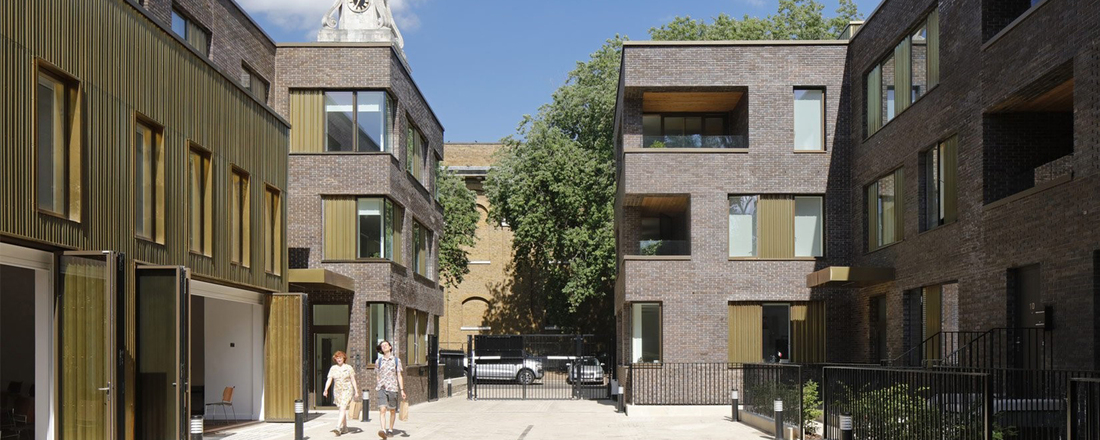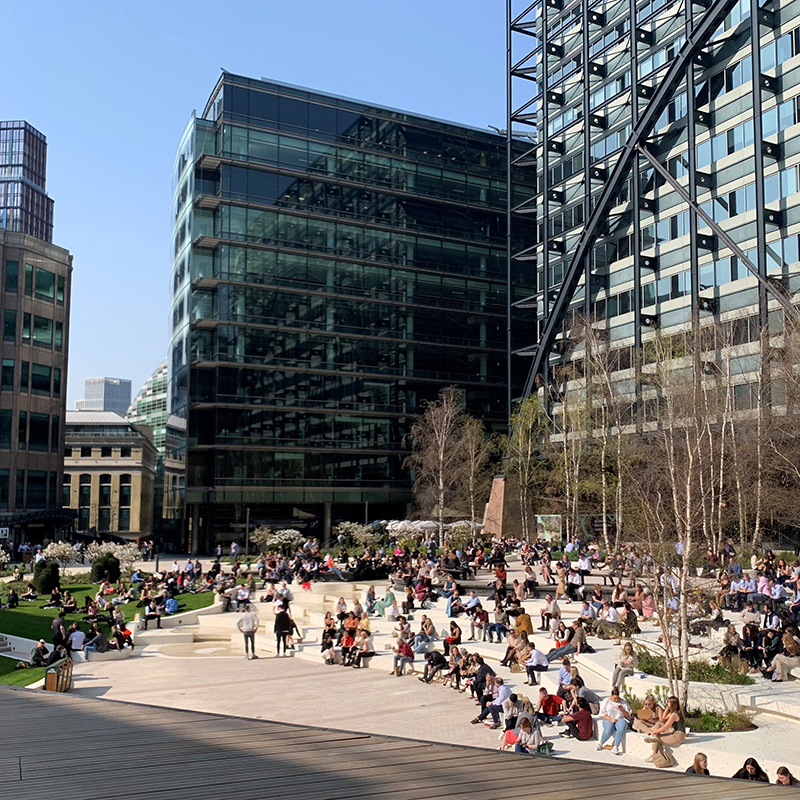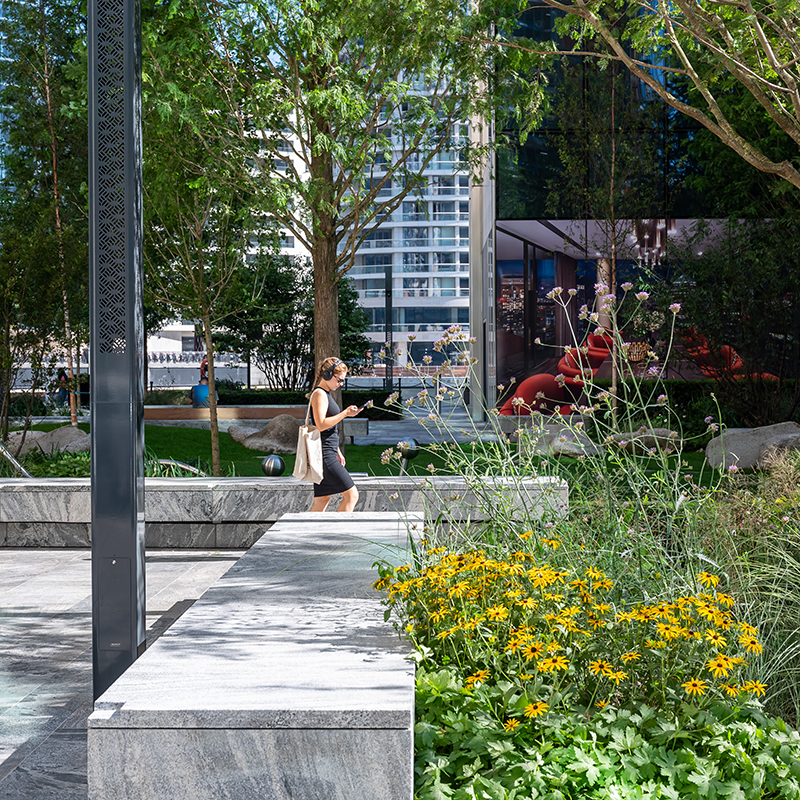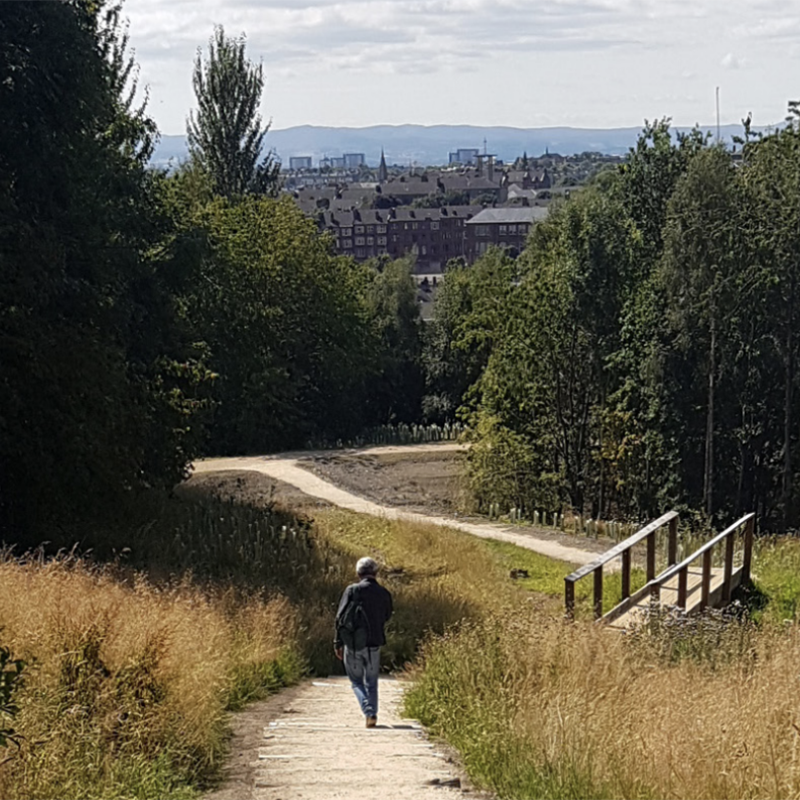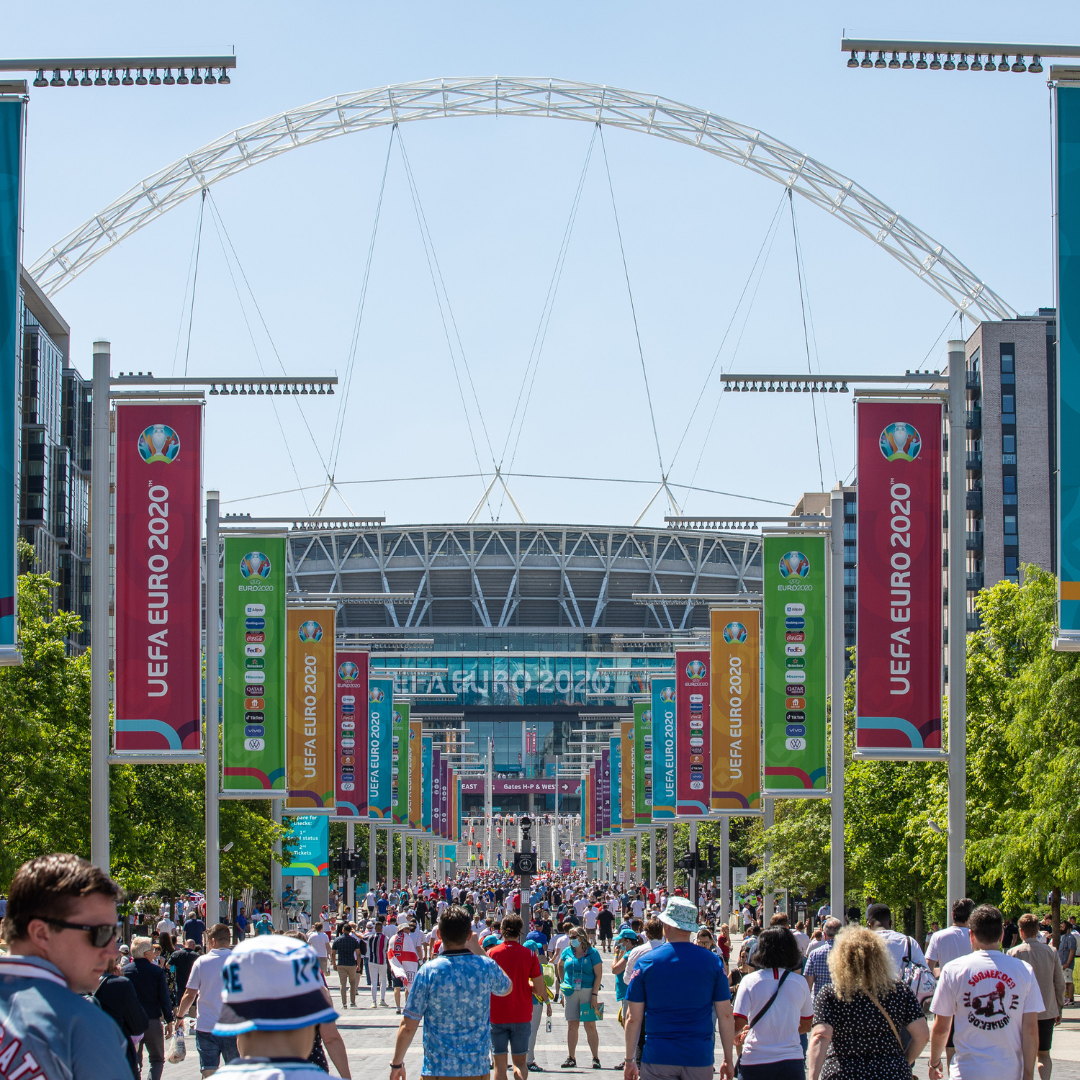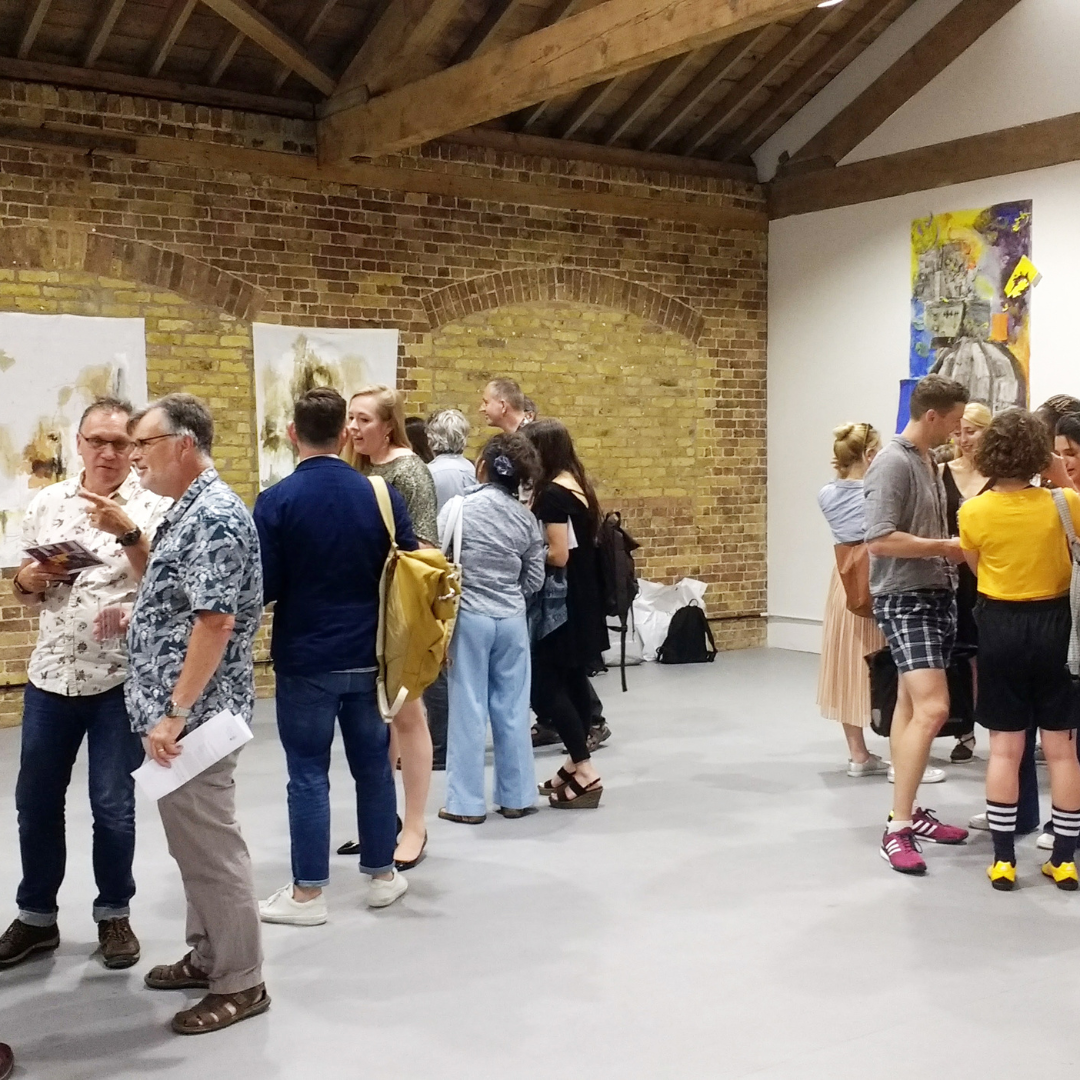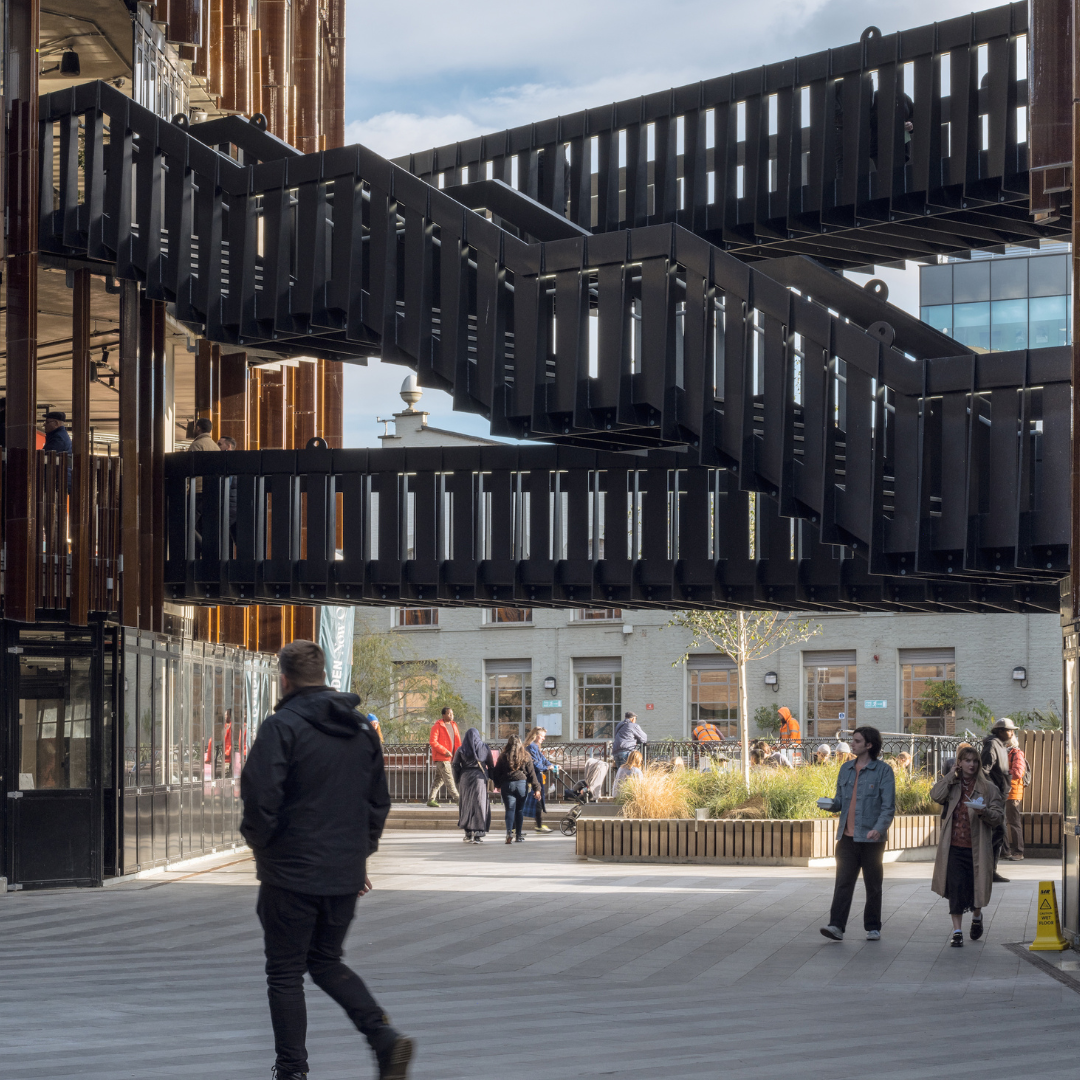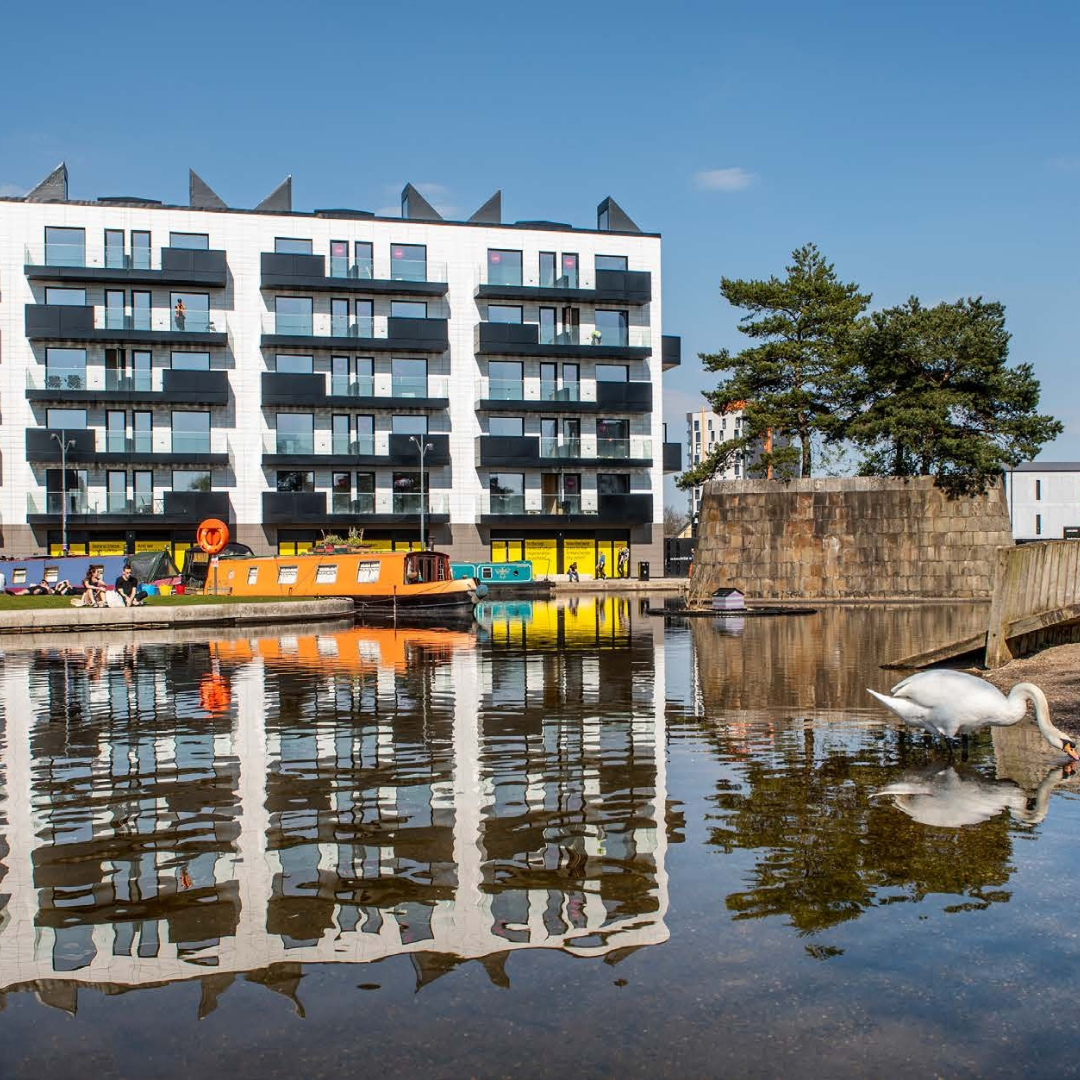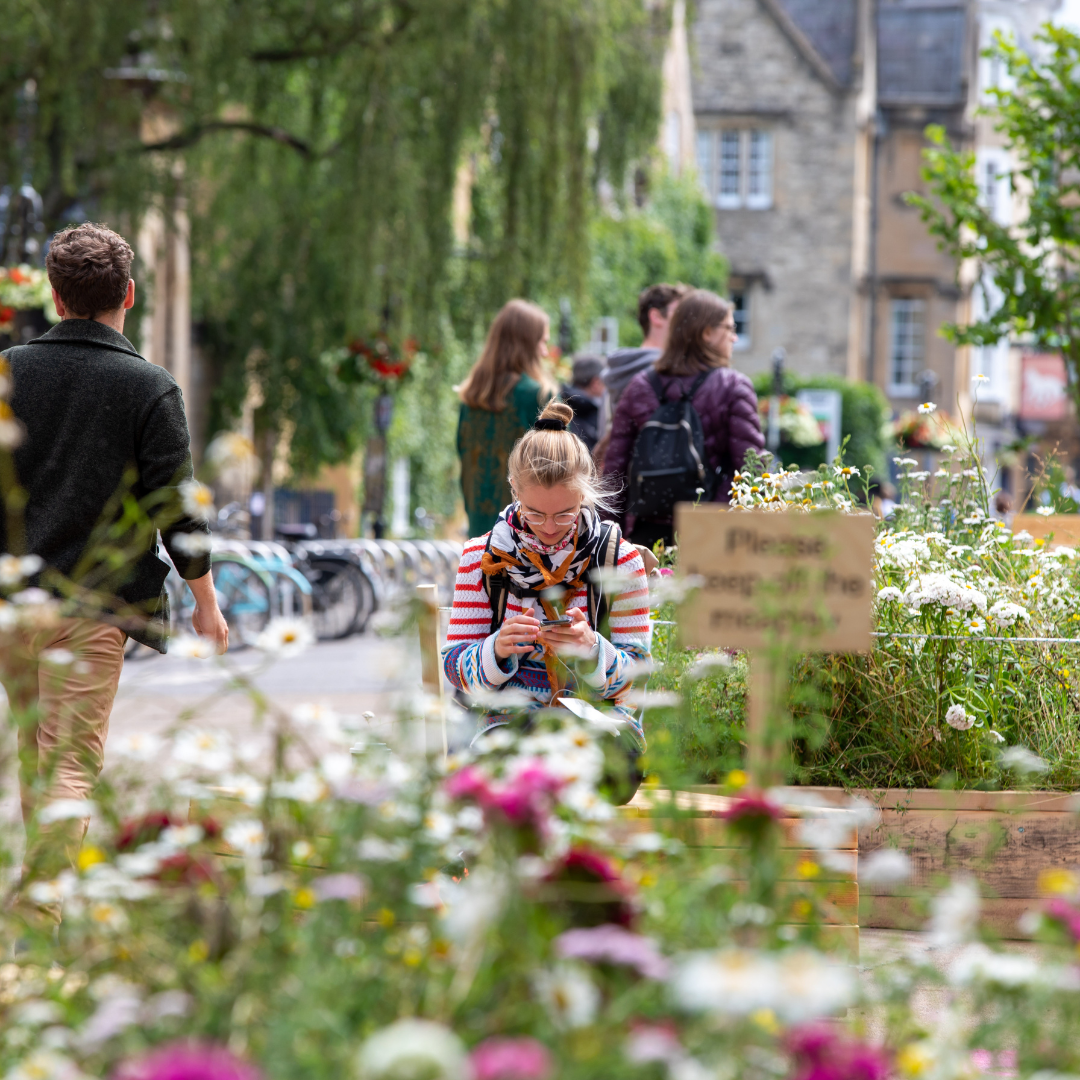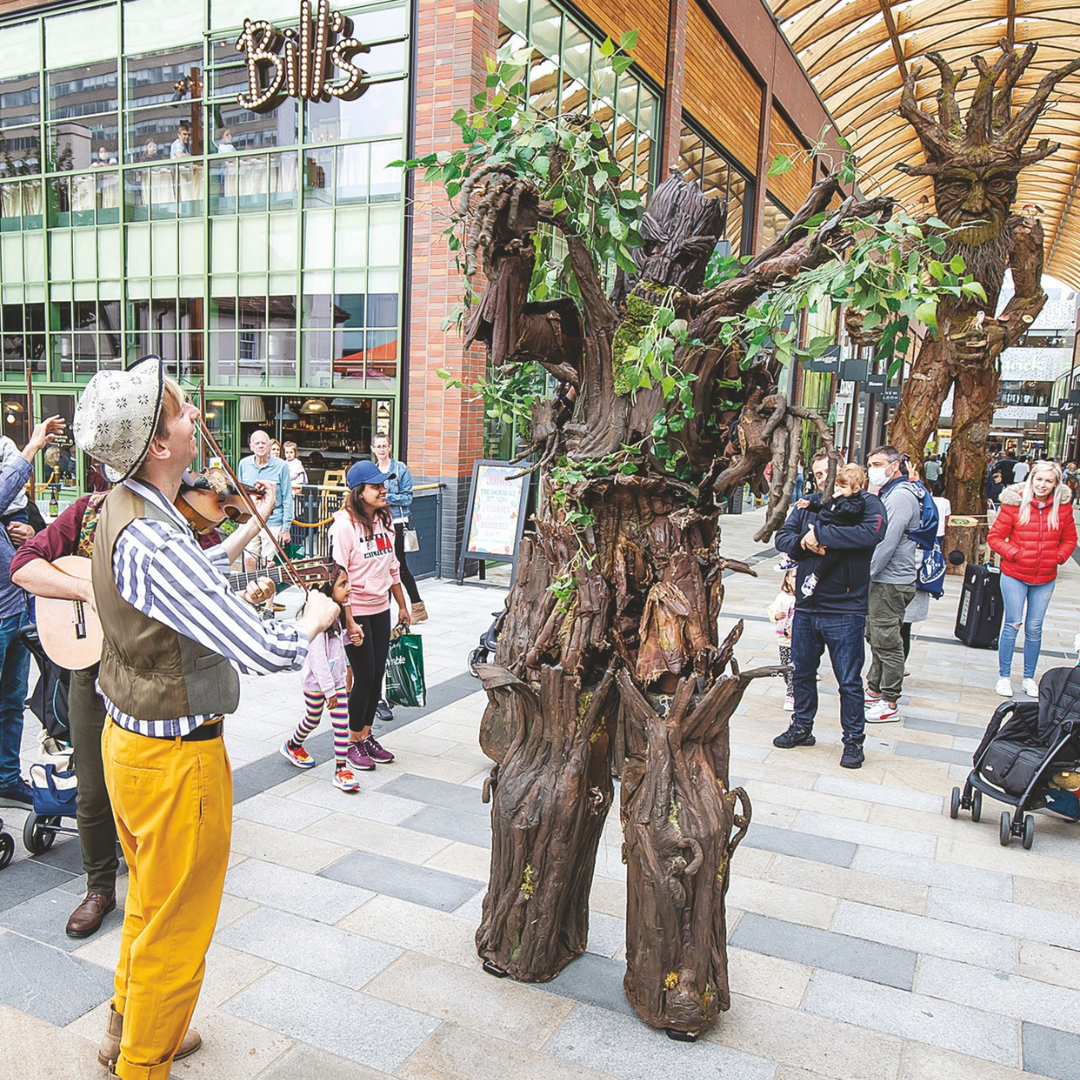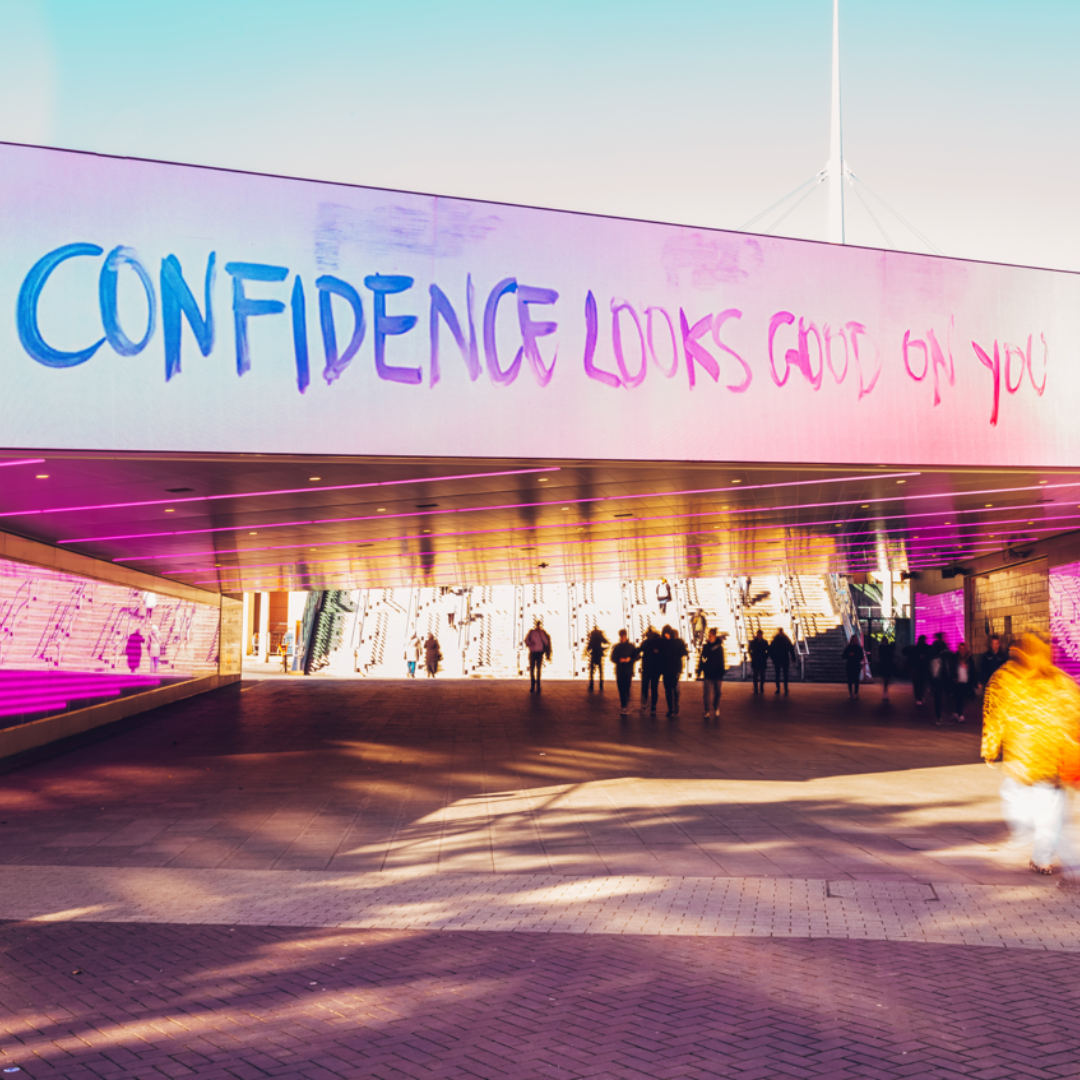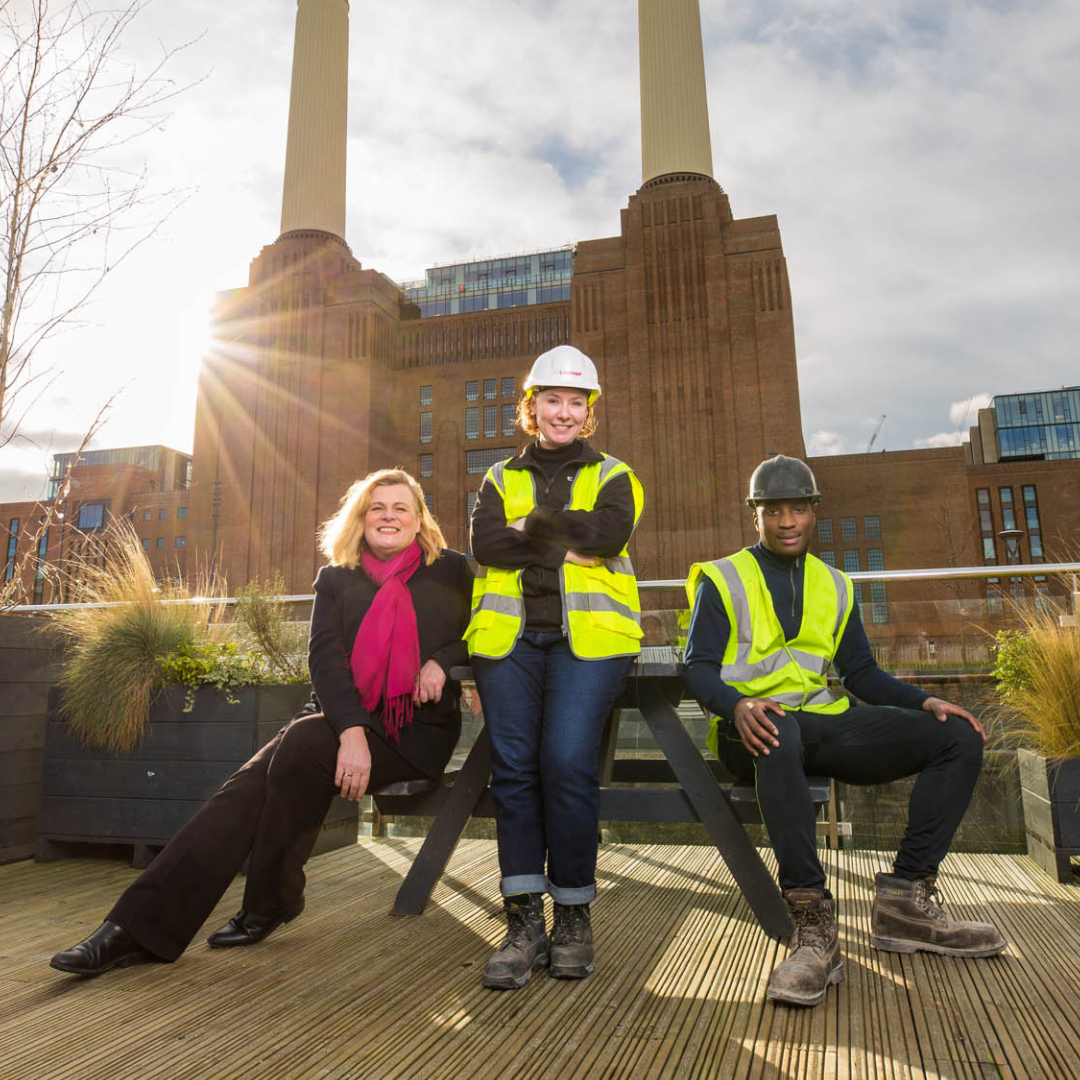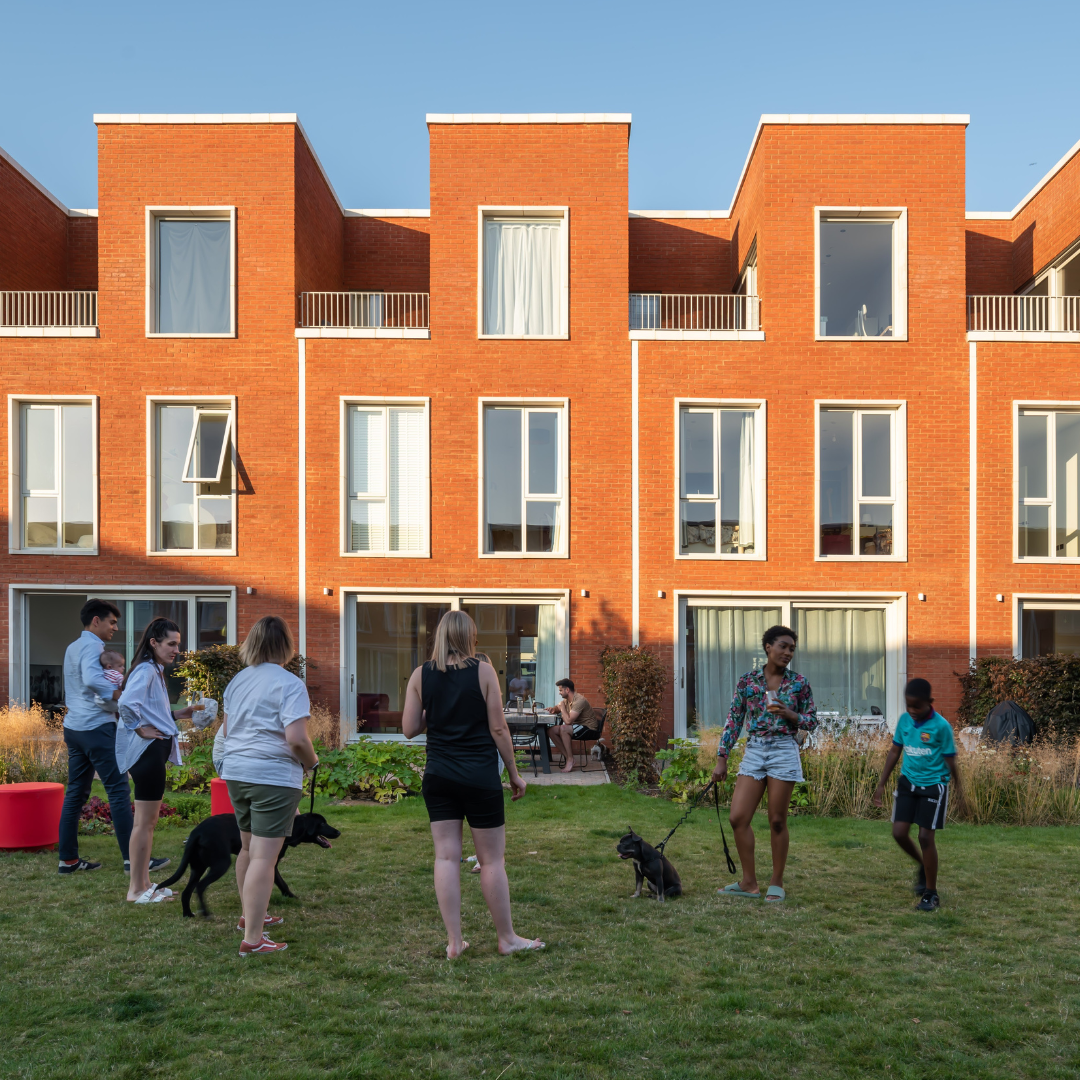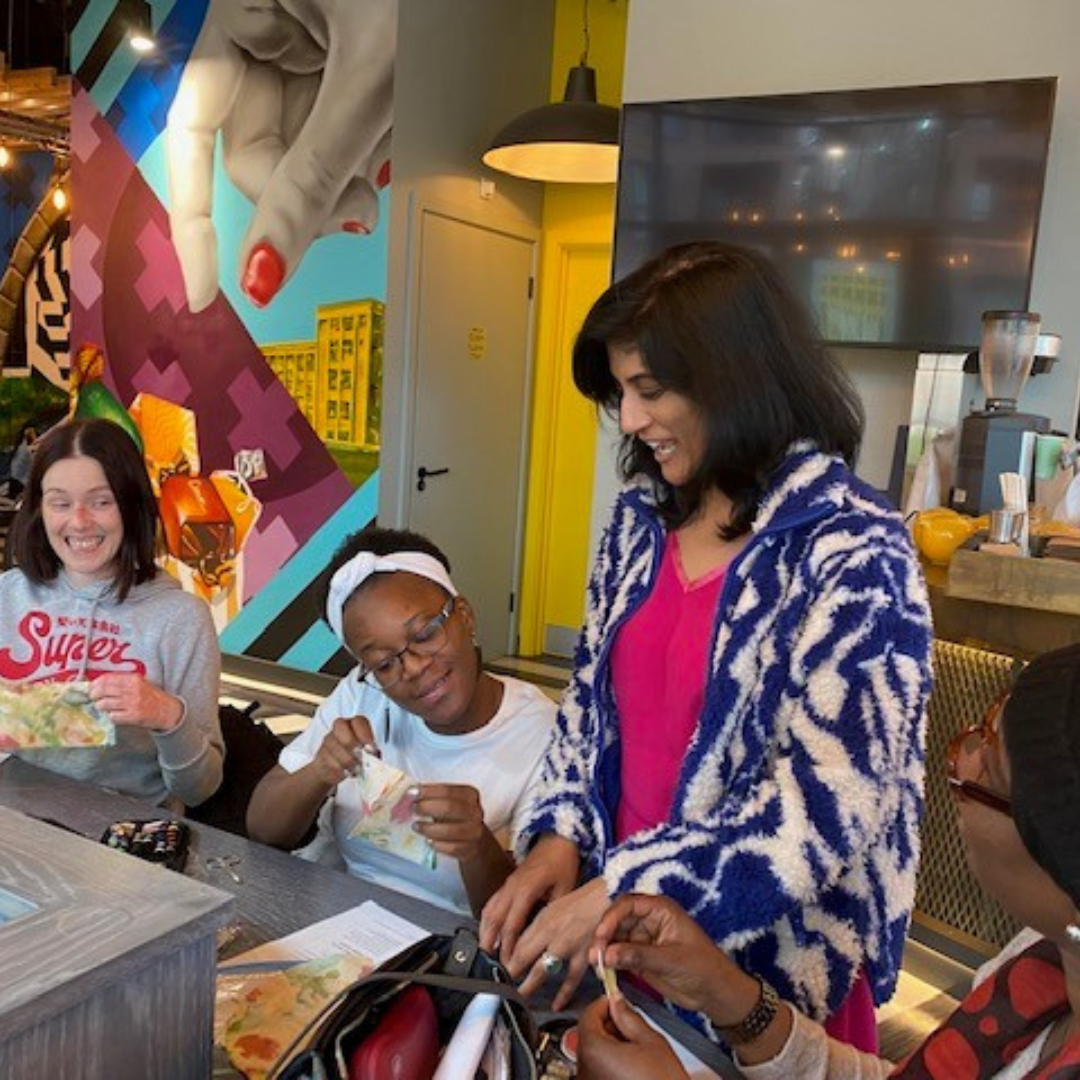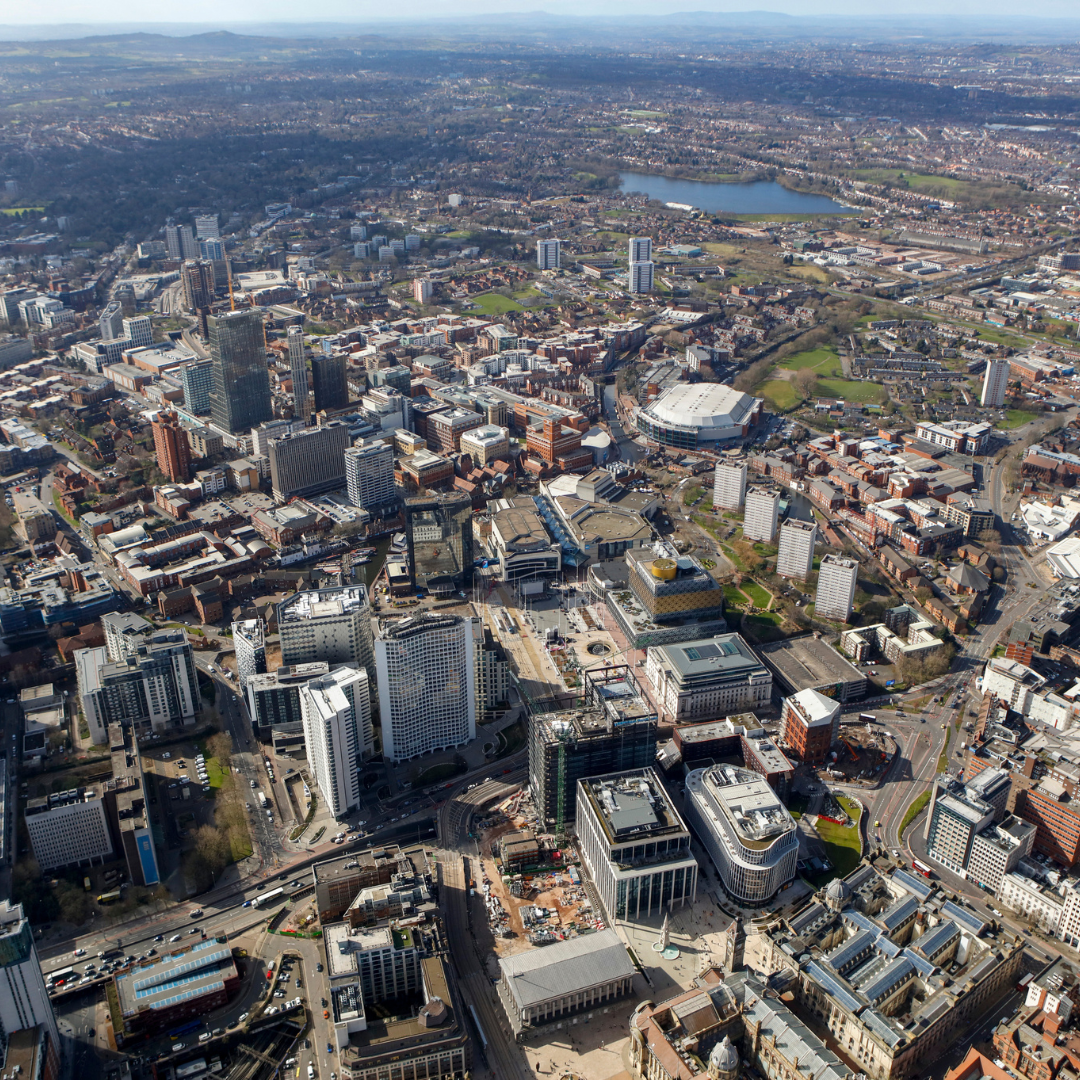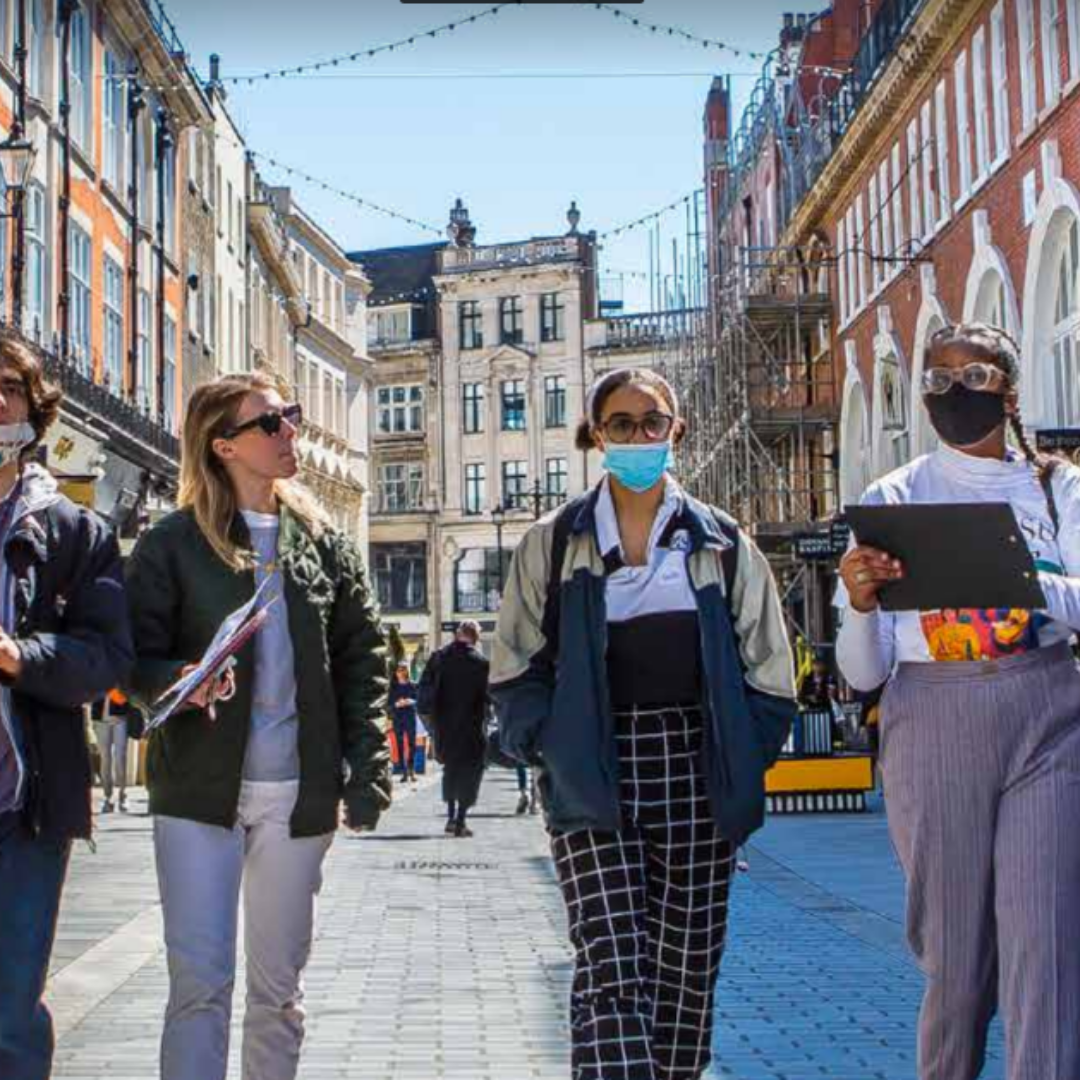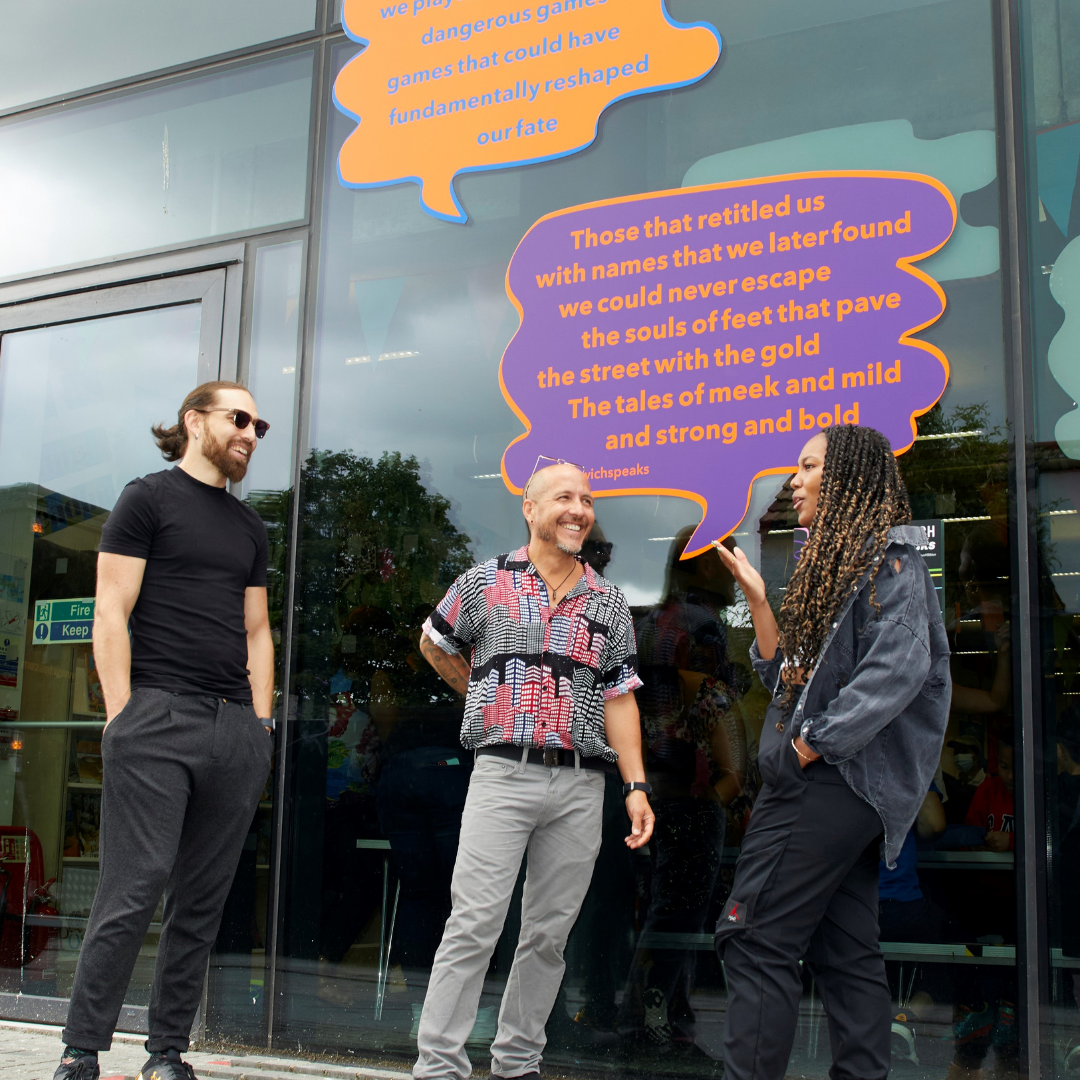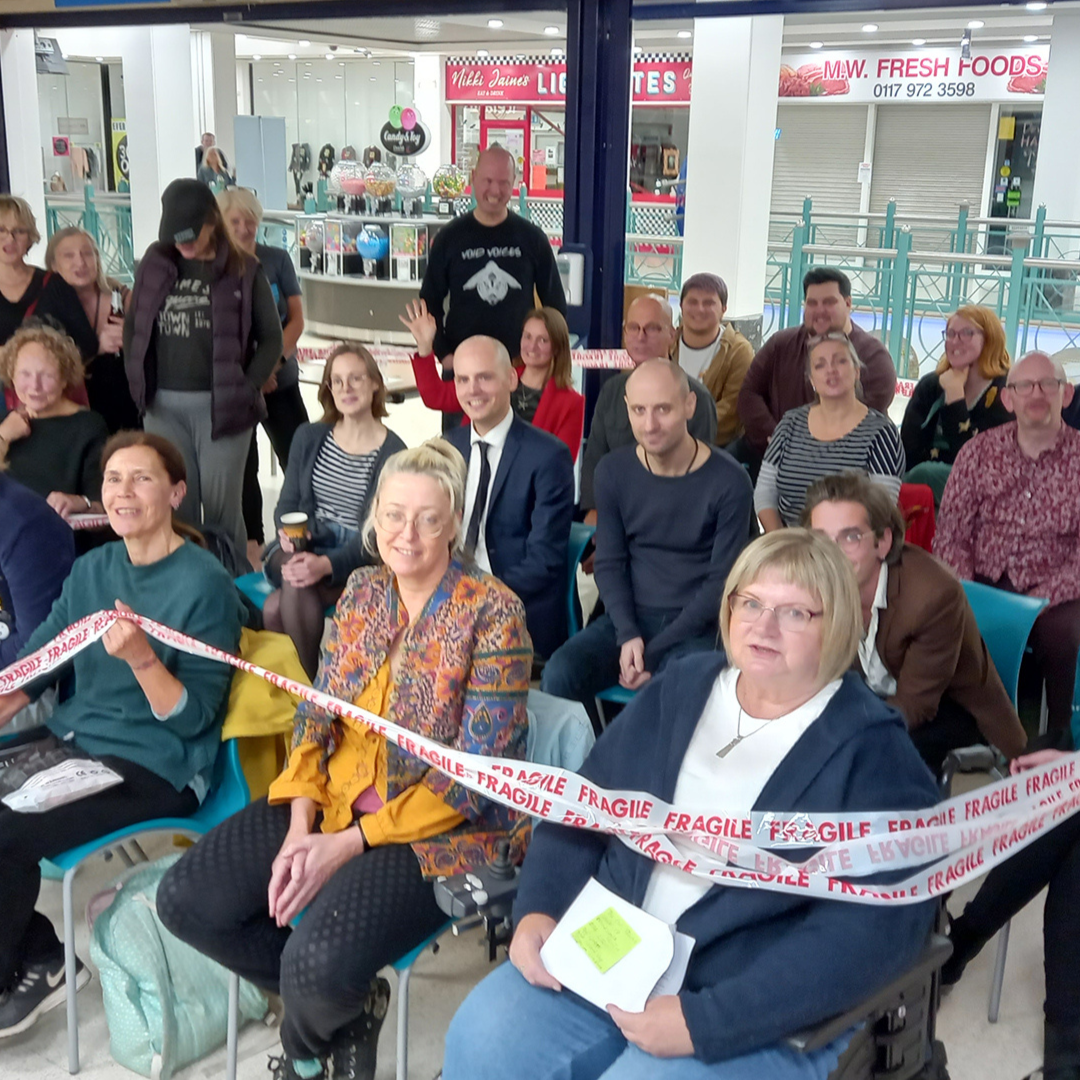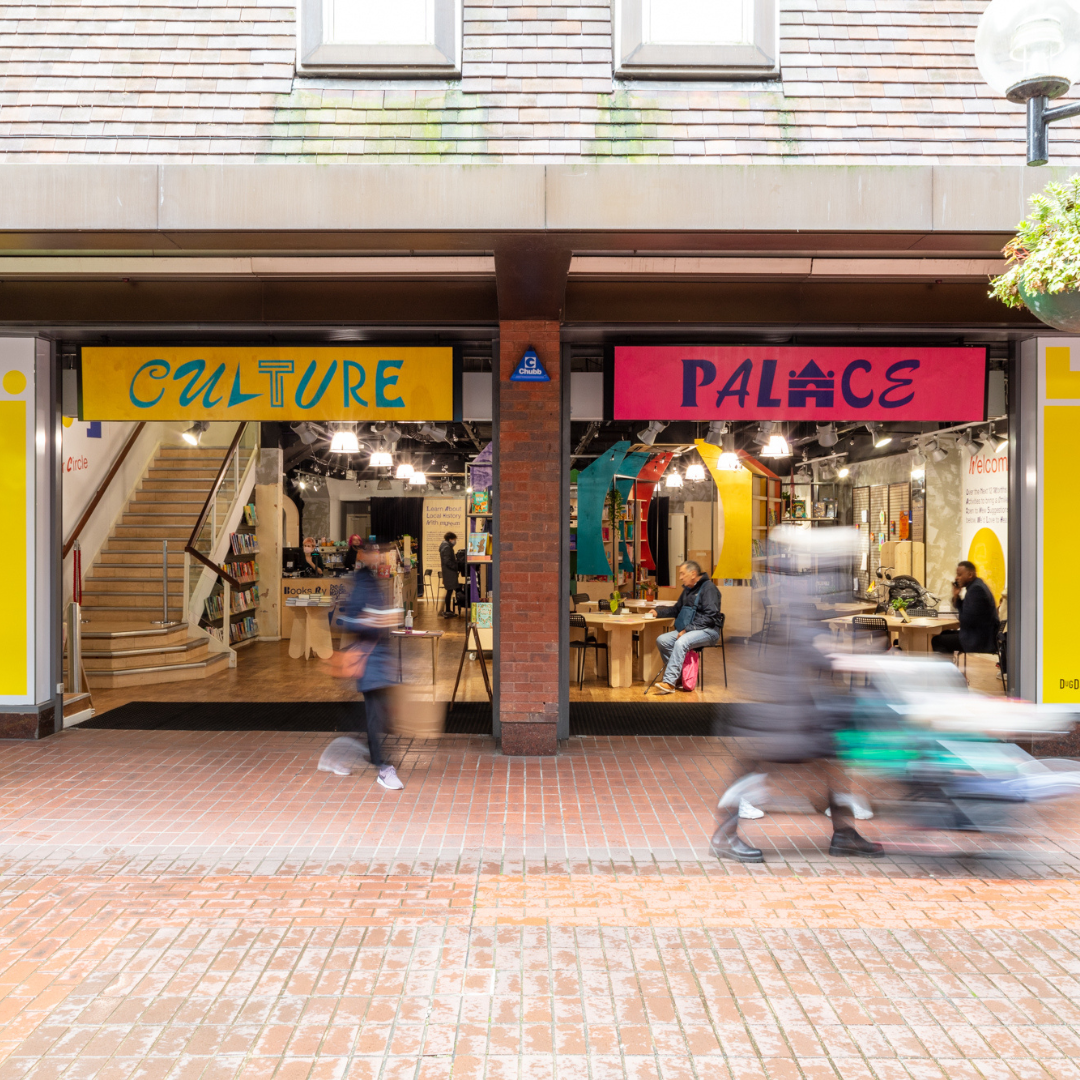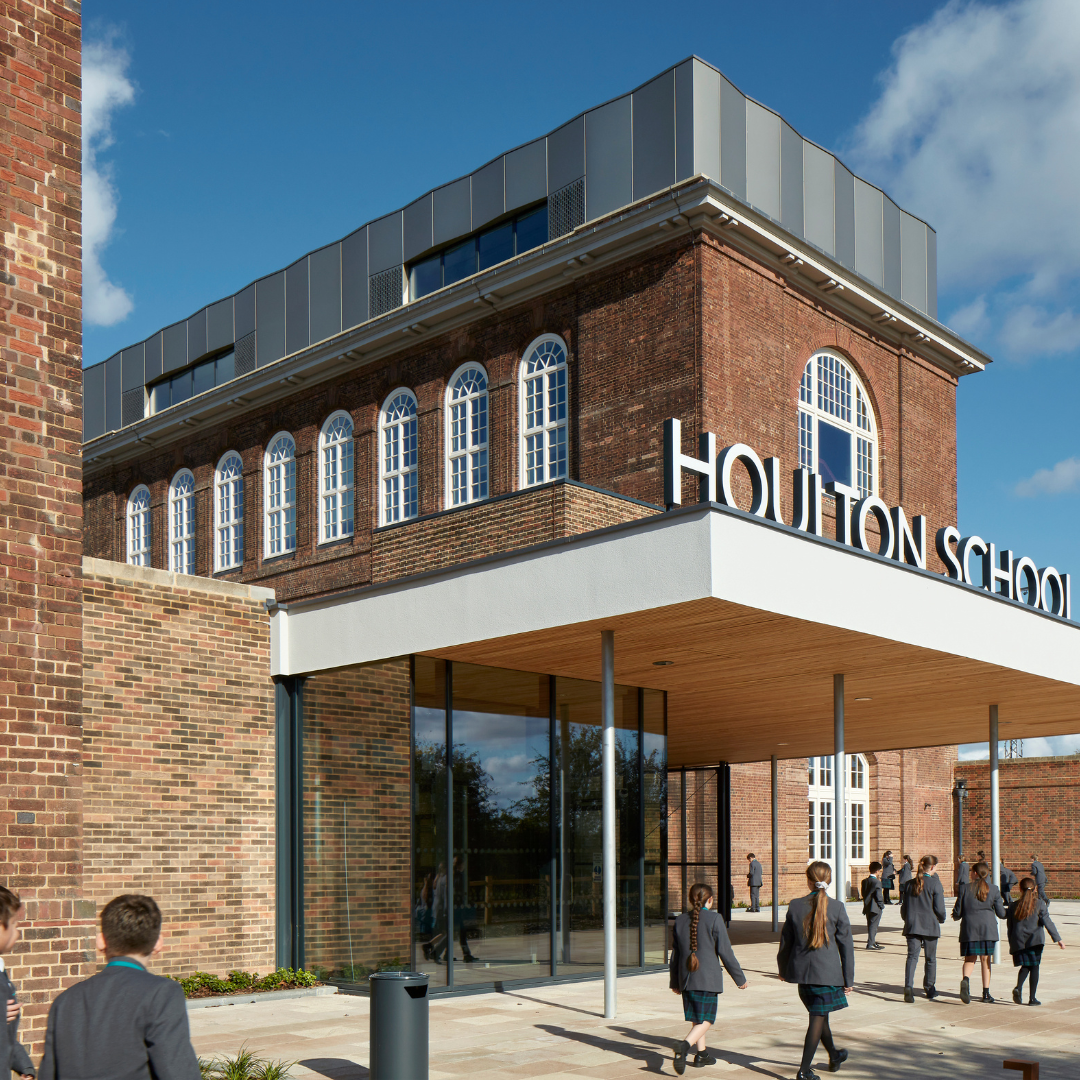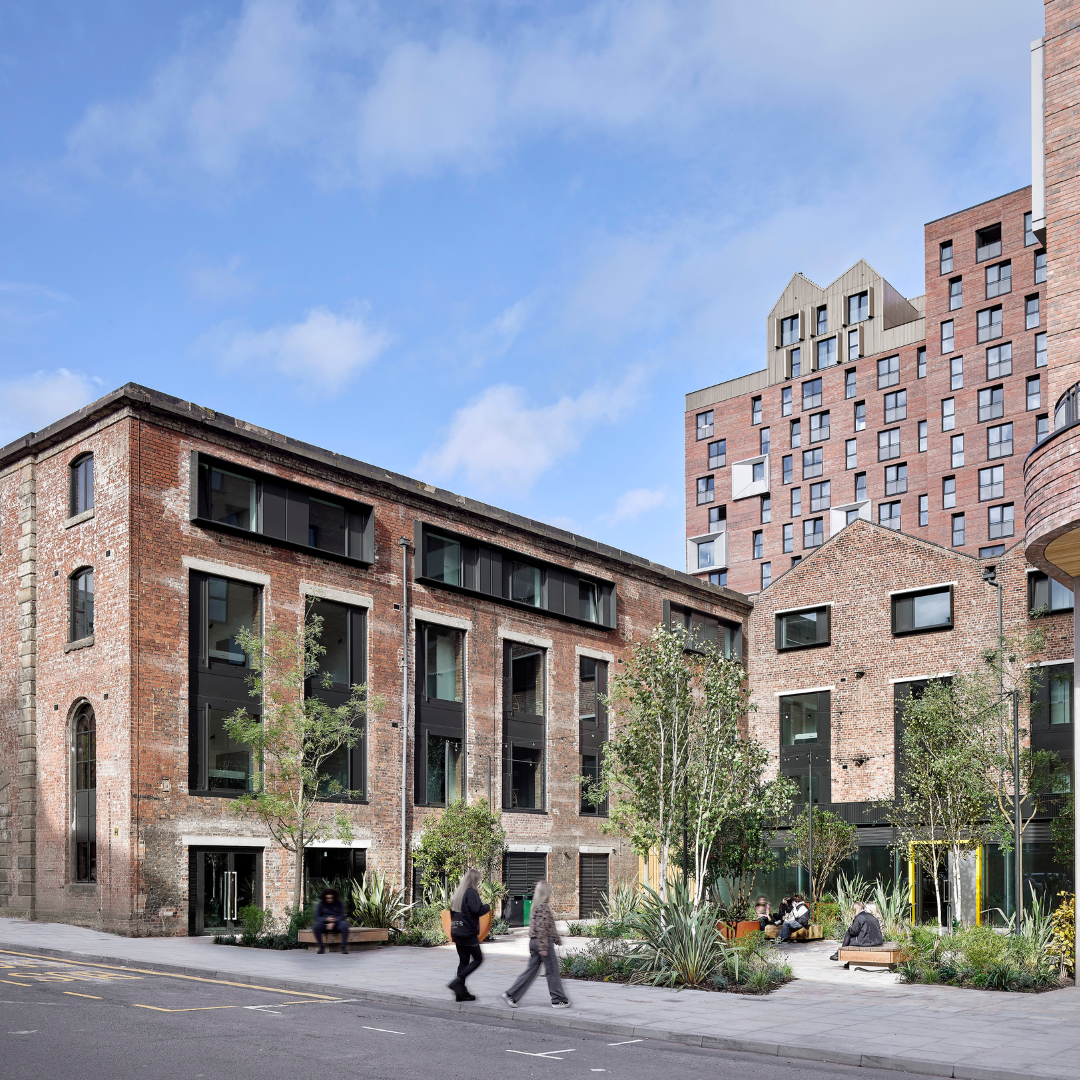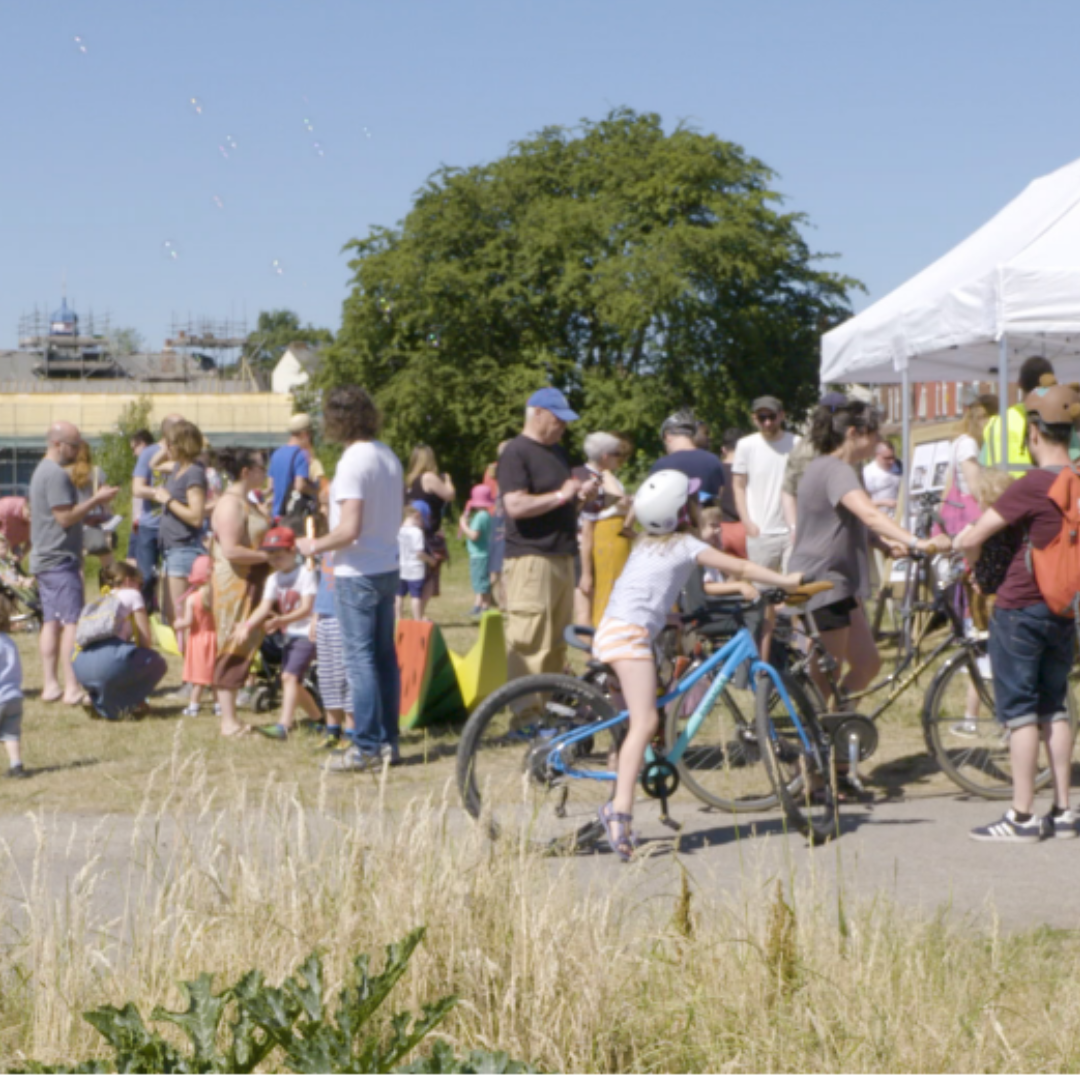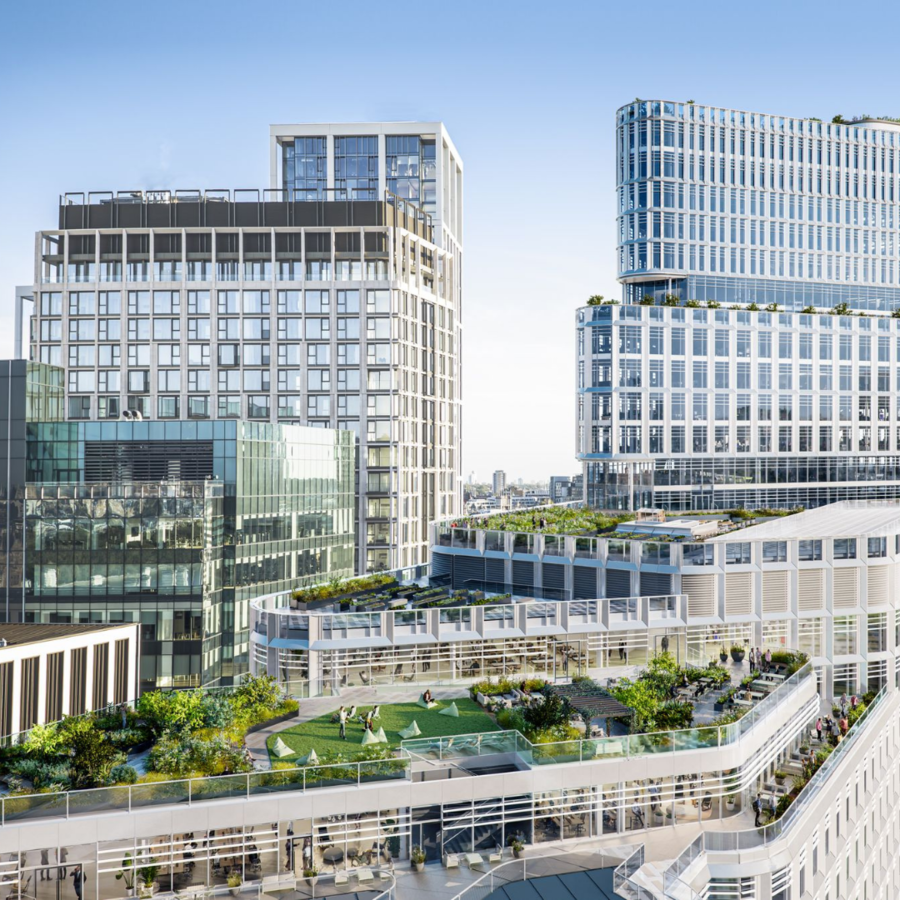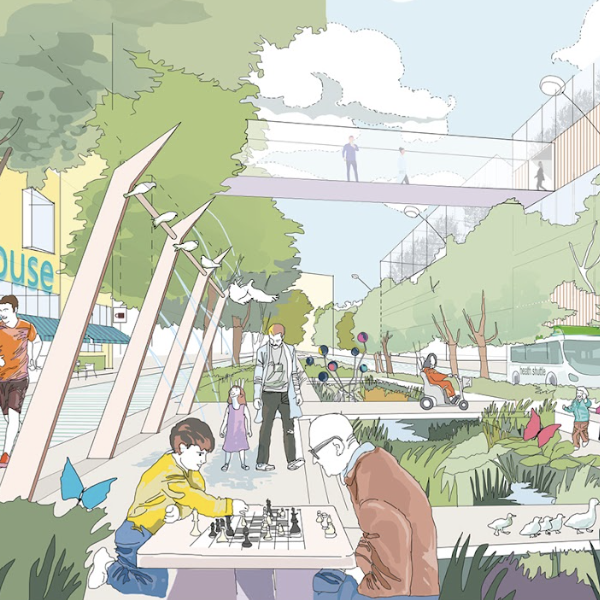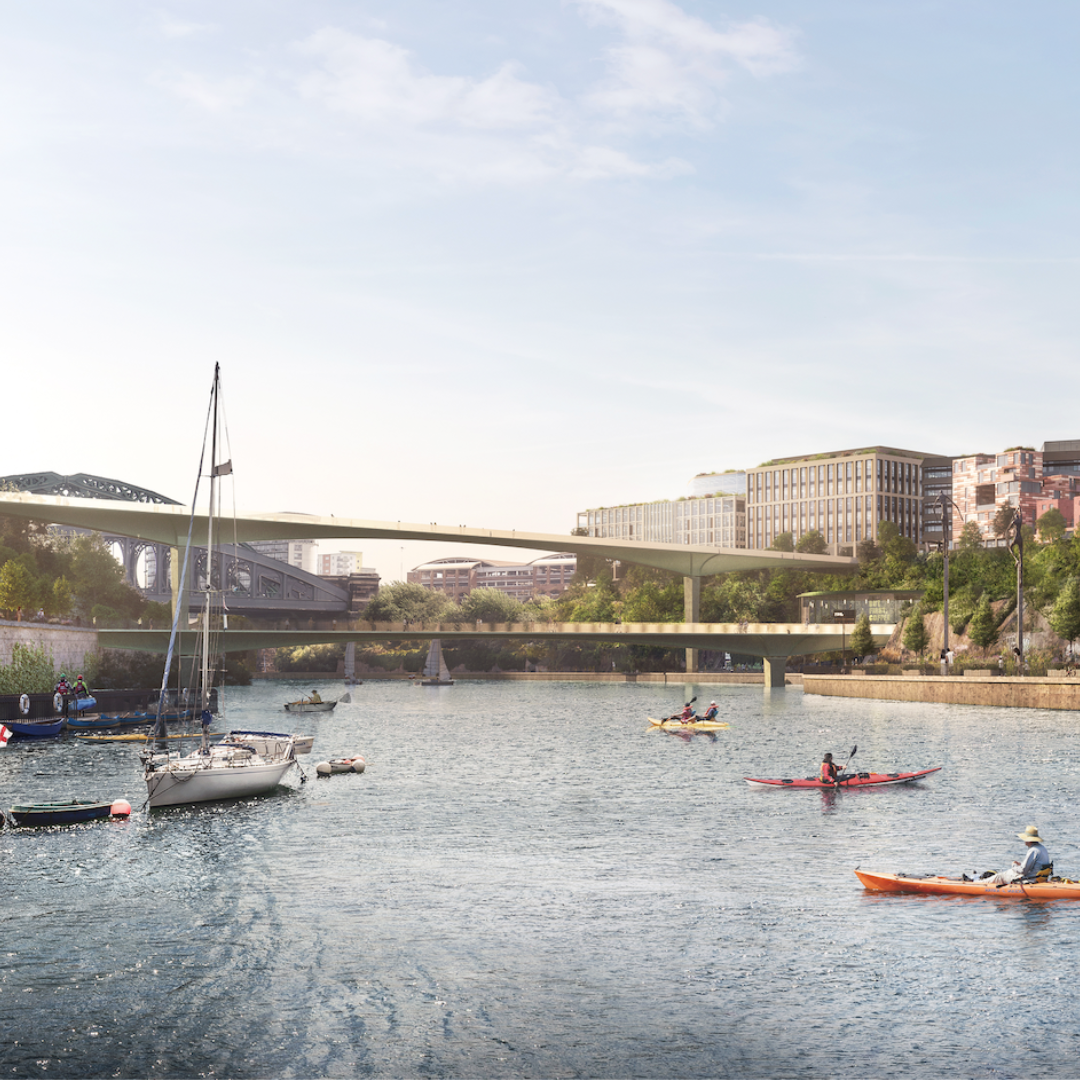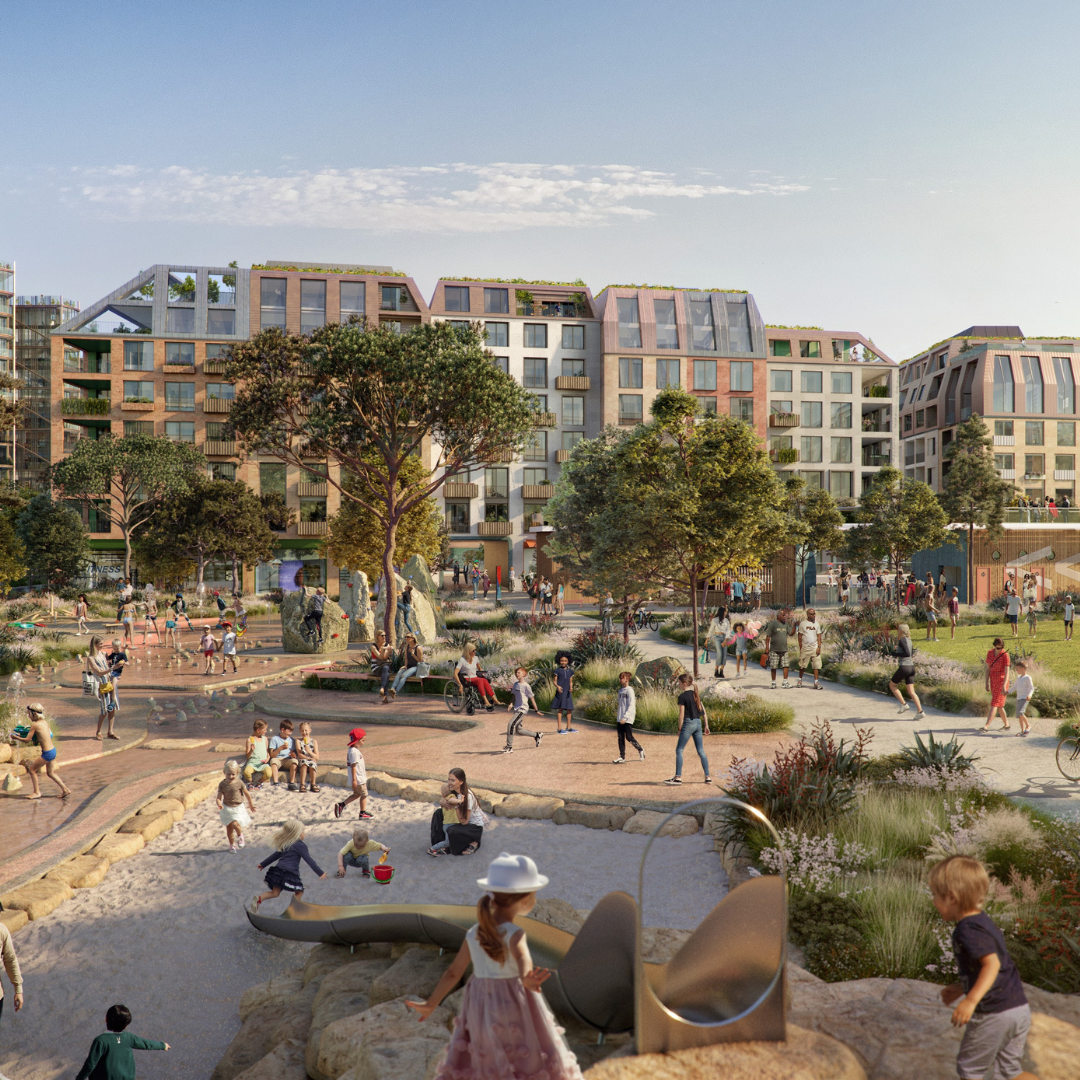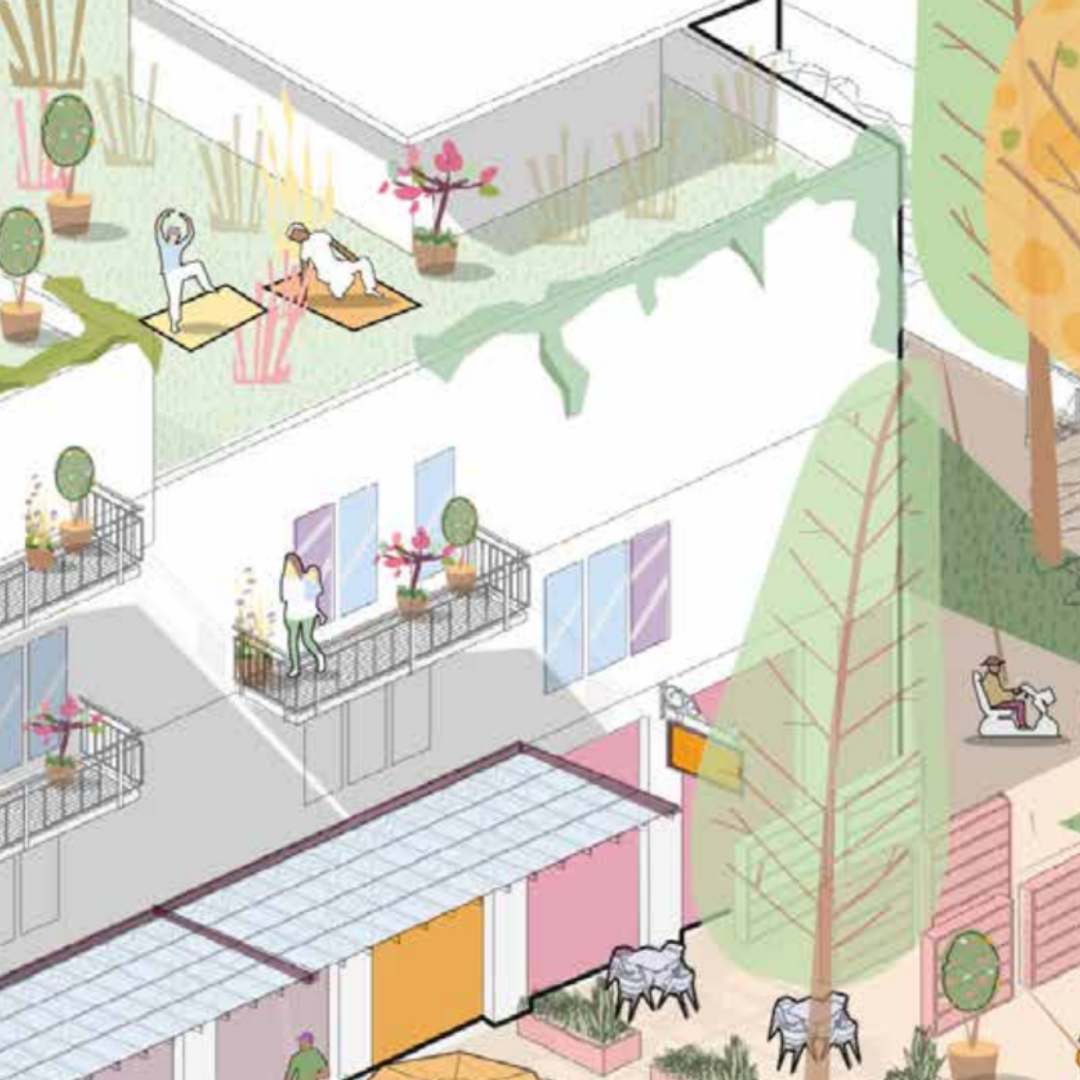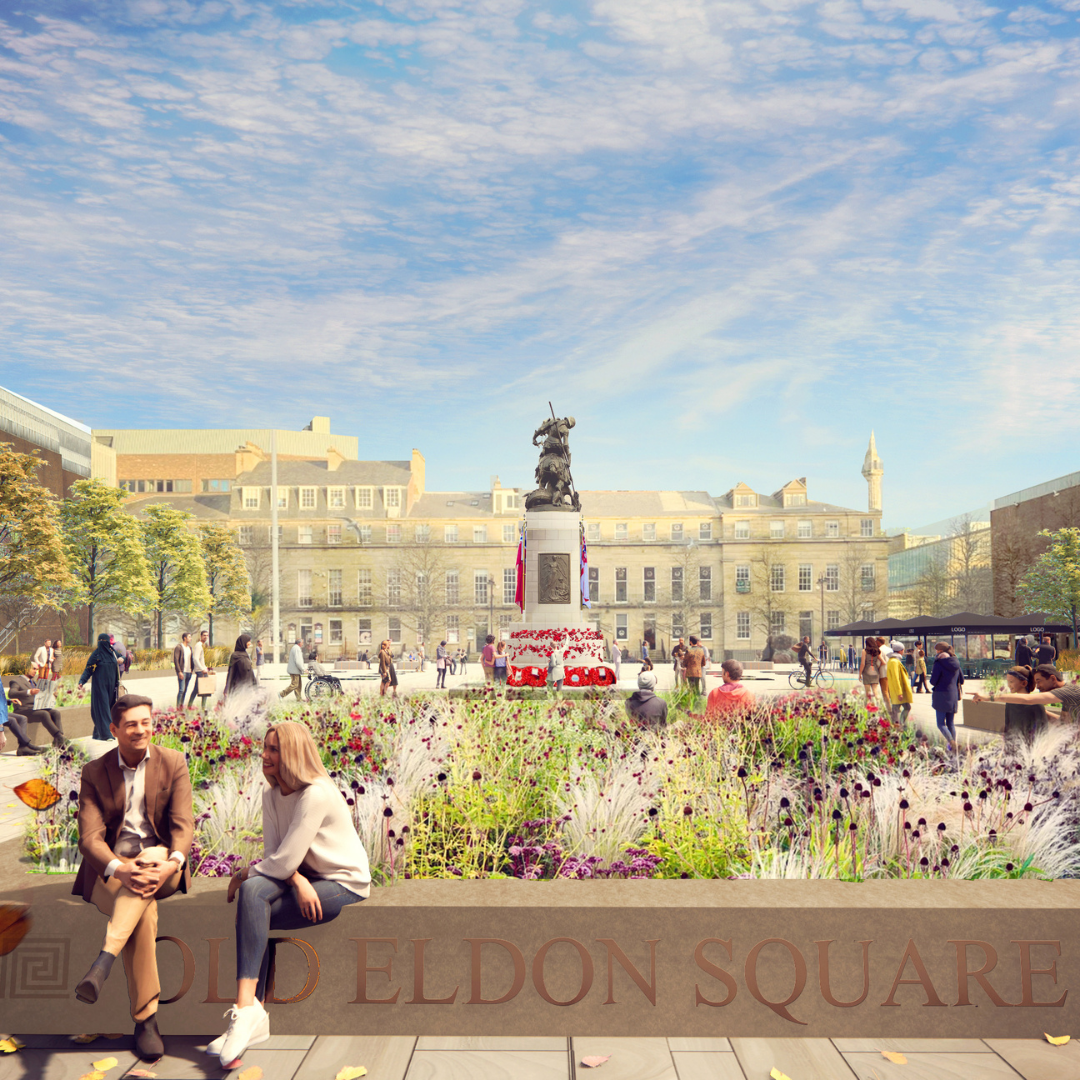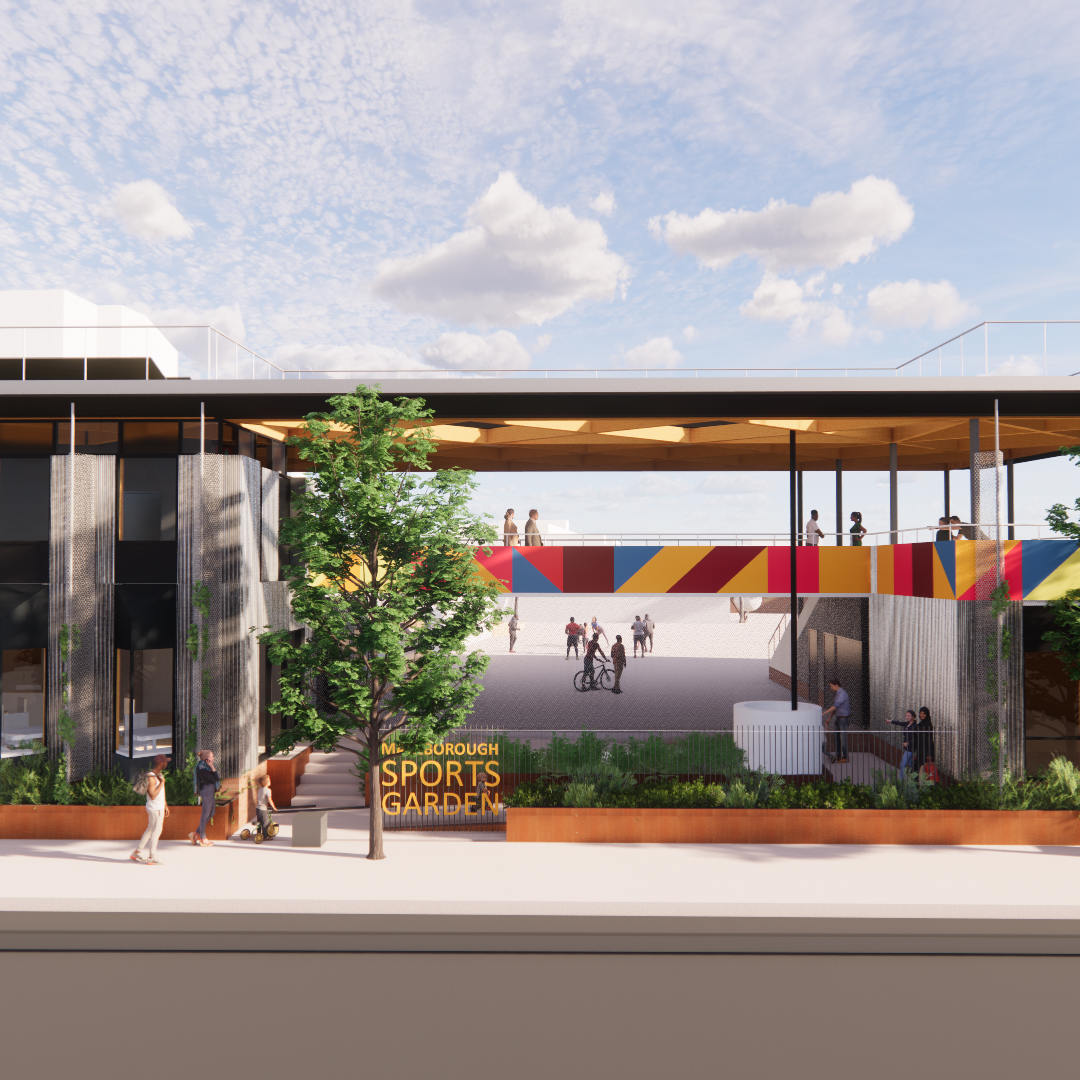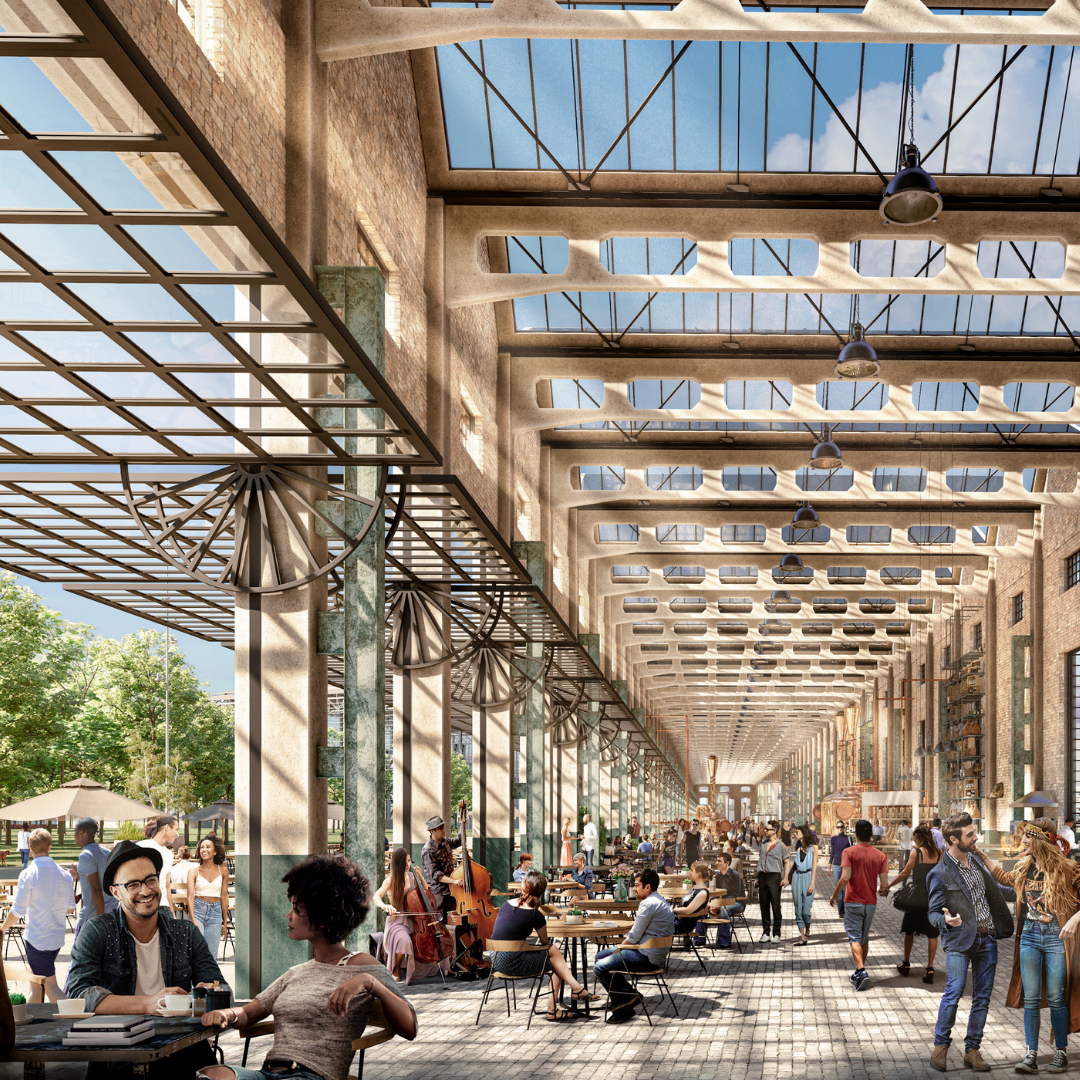Get updates from The Developer straight to your inbox Yes, please!
Announcing the shortlists for The Pineapples awards 2022
Announcing the shortlisted places that are up for a golden pineapple. Projects will be presented in front of an online audience at The Pineapples, 23-27 May with an in-person awards ceremony on 6 July in London

The shortlists have been announced for The Pineapples 2022 awards, including the seven projects vying for a golden pineapple for Place of the Year.
The Pineapples are the only awards that celebrate making places where people thrive with an emphasis on the social and environmental impact of a project’s design and development.
Launched in 2019 by The Developer, The Pineapples are unique in their judging format and process. Shortlisted built projects are visited by at least one judge, who assesses the quality of these places using methodology developed with the Design Council and shaped using the 12 principles of public space by the Gehl Institute and the UN Sustainable Development Goals.
The Pineapples prize-giving party is on 6 July at Boxpark Wembley and follows The Festival of Place, our annual one day summit, get your tickets for both events here or contact bethany@thedeveloper.live
Shortlisted projects are then presented in front of a live audience at a free-to-attend digital event on 23-27 May, with a live Q&A with the judging panel (register for free to attend here.) The winners are awarded a golden pineapple trophy at the award ceremony on 6 July at Boxpark Wembley and tickets are on sale now. The prize-giving party is co-located and follows The Festival of Place, our annual one day summit.
Judges for The Pineapples include:
Paul Monaghan, Executive Director, Allford Hall Monaghan Morris
Elizabeth Peckett, Head of Asset Management, Allied London
Christopher Arthey, Planning & Development Manager, Axiom Developments
Ben Adams, Founding Director, Ben Adams Architects
Danna Walker, Founder / CEO, Built By Us
Phil Stallwood, Development Manager, CEG
Jonathan Wilson, Development Director, CITU
Daisy Narayanan, Head of Placemaking and Mobility, City of Edinburgh
Justin Nicholls, Founding Partner, Fathom Architects
Natascha McIntyre Hall, Head of Regeneration, Gleeds Advisory Services
Magali Thomson, Project Lead for Placemaking, Great Ormond Street Hospital
Dominic Spray, Design Director, Hadley Property Group
Catherine Dewar, Regional Director North West, Historic England
Elizabeth Rapoport, Assistant Director, Strategy, Homes England
Martha Thorne, Dean, IE School of Architecture and Design
Sophie Thompson, Director, LDA Design
Amahra Spence, Founder / Director, MAIA
Jonny McKenna, Director – Dublin, Metropolitan Workshop
Blossom Young, Head of Operations, Poplar HARCA
Hani Salih, Researcher, Quality of Life Foundation
Julian Tollast, Head of Masterplanning, Quintain
Dr Bridget Snaith, Partner, Shape Landscape & Urban Design
Adam Tinson, Senior Analyst, The Health Foundation
Neil Murphy , Director, TOWN
Romy Rawlings, Commercial Director, Vestre
Will Sandy, Founding director, Will Sandy Design Studio
Why pineapples? The fruit is a traditional symbol of welcome in UK architecture. The Design Council said: “Our experience and evidence shows that well-designed neighbourhoods can have a transformational impact on us all, improving health and well-being, enhancing the environment and stimulating the economy.”
In 2022, categories include Public Space, Activation, Place of the Year, Place in Progress, Future Place, International Future Place, Community Engagement and Creative Retrofit, with two specialist categories – Future Space: Public Realm and Activation: Re-Store.
Get your free pass to attend The Pineapples online from 23-27 May and see 60+ exemplar projects presented by developers and architects as they vie for a golden pineapple for design, development and social impact
Shortlists for The Pineapples 2022
The Pineapple for Public Space
Exchange Square is a major new public park reimagined. The project focuses on interweaving recreational spaces with informal, open-air working spaces and retail shops, which encourages a mix of uses and activities at different times of the day for a diverse audience.
The new public realm features social spaces, access to science, exhibits and play within a network of pedestrian and cycle spaces with increased biodiversity weaved through. The client and design team worked in collaboration with play equipment and aquatic planting specialists to facilitate play and enhanced greening, all with a focus on science.
This masterplan introduces 3 acres of public green space alongside three new residential buildings, transforming a closed vacant plot, opening up walking and cycling links, and using diagonal desire-lines to link the water's edge to South Quay Station and Marsh Wall.
Elephant Park's central park is a stunning 2-acre green oasis including community space with expansive lawns, mature London plane trees, Elephant Springs, a landmark water playscape, and pedestrian walkways nestled among naturalistic planting.
The Pineapple for Place of the Year
At the heart of Greenwich Peninsula, the Design District provides a major hub for creative industries around South East London to enrich the current and future communities whilst creating a purpose-built, permanent home with flexible leases to help new businesses thrive. The Design District equips 1800 creatives with much needed specialist workshops, meeting rooms, purpose-designed workspaces, alongside leisure and cultural venues.
Quintain’s 85-acre Wembley Park is a new neighbourhood home to OVO Arena Wembley and Wembley Stadium as well as retail and food businesses. It has been transformed into an all-year place to live, work, shop and play whilst providing 4,700 homes, office spaces, public spaces with parks and gardens, public squares, wide boulevards for locals and visitors alike to enjoy.
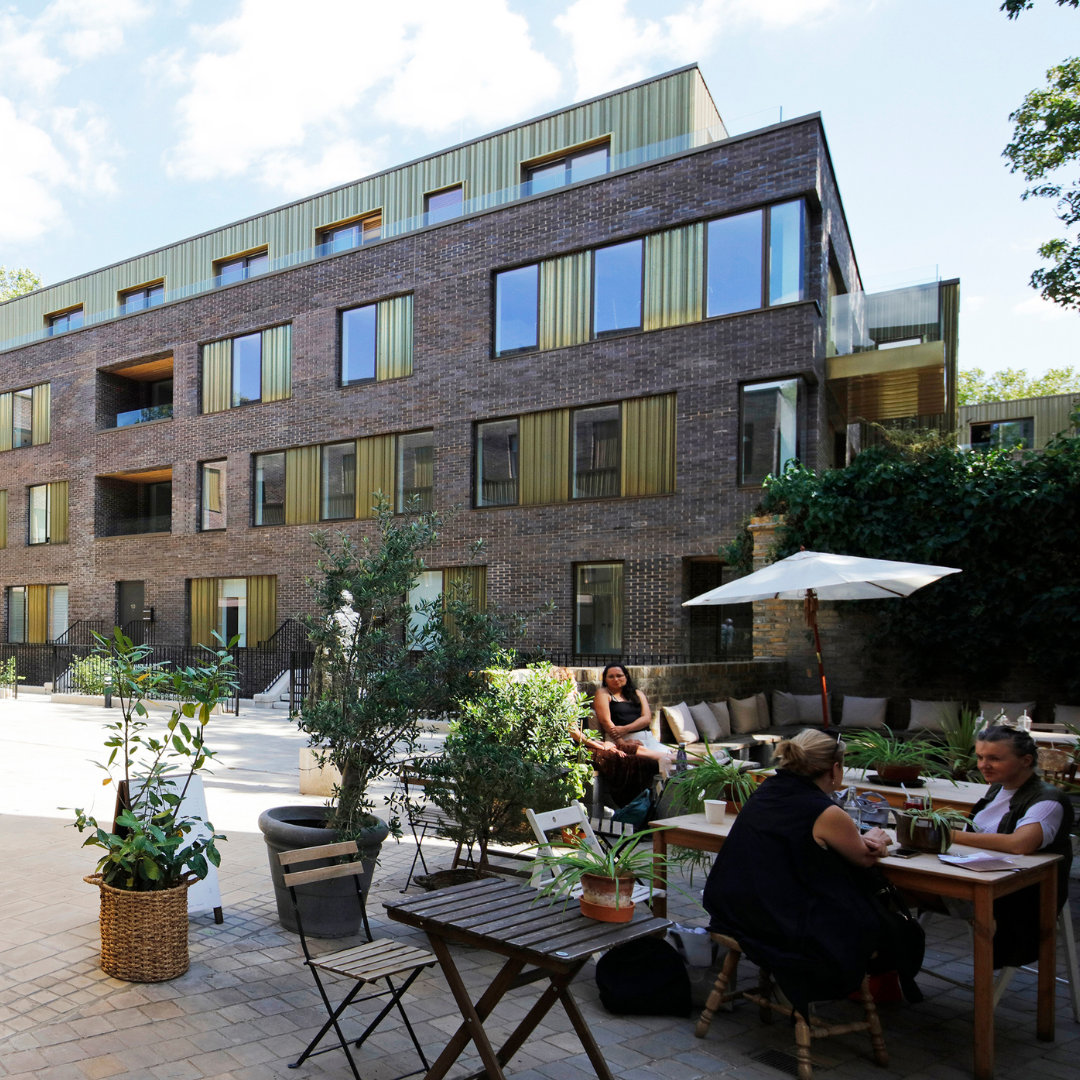
This unique place is designed around the existing Grade I listed St Augustine Tower and the Grade II* listed St John at Hackney Church. The Church was in a poor state of repair and urgently required refurbishment at substantial cost. A significant proportion of these costs were covered by proceeds raised by the development, which provides engaging new community spaces alongside 58 affordable homes.
Located where the River Lea meets the Thames, Trinity Buoy Wharf fosters a thriving mix of uses including craftspeople, artists/sculptors, photographers, musicians/sound artists, designers, arts organisations, ceramicists, consultants, TV/film, poets, architects, electrical engineers, bamboo product suppliers, a tattooist, floating recording studio, plus major tenants such as Uber Boats by Thames Clippers, the props department of the English National Opera, The Faraday School, Trulife Graphics and the Prince’s Foundation art Diploma Year.
The Pineapple for Activation
Gillespies was chosen by Canary Wharf Group to establish a landscape framework for a programme of landscaping improvements across the Estate to promote biodiversity, boost wellbeing, and create enlivened areas for all to enjoy.
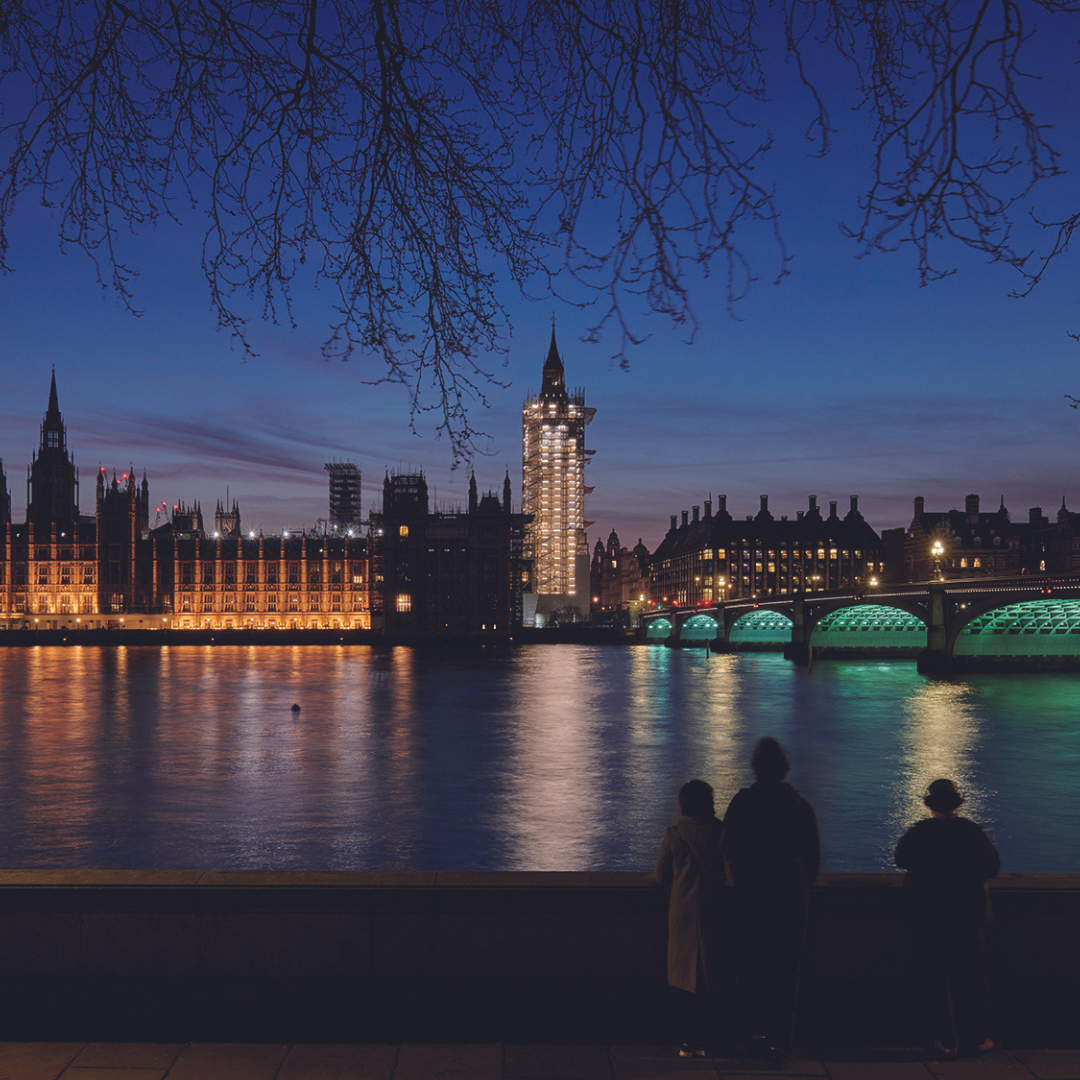
The Illuminated River Foundation (IRF) is a charity that aims to create a public work of art that can be enjoyed by all, reshaping nighttime views of the Thames and enriching the river's atmosphere after dark, thereby increasing visitor dwell times in the area.
The Pineapple for Place in Progress
The Grade II* listed Power Station has already begun to welcome residents, and opens in September 2022 with over 100 shops, restaurants and cafes, events, a unique chimney lift experience offering 360-degree panoramic views of London’s skyline and new office space. Circus West Village is now home to over 1,700 residents and a mix of independent and design-led restaurants, cafés, shops, leisure and entertainment venues that welcome over three million people each year. The retail and leisure experience will continue on a new high street, Electric Boulevard, with its mix of office space, shops, bars and restaurants, a park, playground and an exciting new 164-room hotel.
The first two residential phases of Sugar House Island, which include a primary school, Dane’s Yard creative quarter (containing architectural publisher Phaidon) and Cooperage Yard, are complete. The buildings follow historic footprints, with old yards and riverside views. Seven public streets, residential mews and courtyards, a riverside garden and play area provide visitors and locals with places to explore, relax and dwell.
Birmingham’s first island neighbourhood, Port Loop has already delivered 105 homes, as well as three communal gardens for residents, a one-acre public park, and a floating coffee shop on the adjacent canal. When complete, it will include 1,150 new homes, commercial workspaces, parks, green spaces and community facilities.
Over halfway through its timeline, with an estimated completion date of 2026, so far Elephant Park has delivered 1,784 new homes, an energy centre supplying net-zero-carbon heat and hot water to the residents and businesses, with additional capacity for a further 1,000 properties outside the development’s boundary, 32 new retail units for cafes, shops, restaurants and fitness operators, and a brand new 2-acre park at the heart of the masterplan.
In the past 12 months, two new residential buildings launched in Wood Wharf: 8 Harbord Square and 30 Harbord Square. Alongside these residential buildings, recently opened restaurants include Hawksmoor and Emilia’s Crafted Pasta, alongside a branch of Amazon Fresh. Mercato Metropolitano is set to open imminently within 10 George Street, a Build to Rent development within Wood Wharf.
The first phase of development is complete, providing 302 new homes, a nursery and a local Co-op branch, whilst Clarnico Club, a multi-purpose marketing and social hub with a café and flexible event space, serves as the beating heart of the new neighbourhood.
The Pineapple for Community Engagement
Working with Mayfair communities to rethink the role of Grosvenor Square as an exemplary urban garden, Grosvenor launched a Community Charter entitled "Positive Space", which seeks to set a precedent for public engagement and ensuring that residents have a real say in their communities.
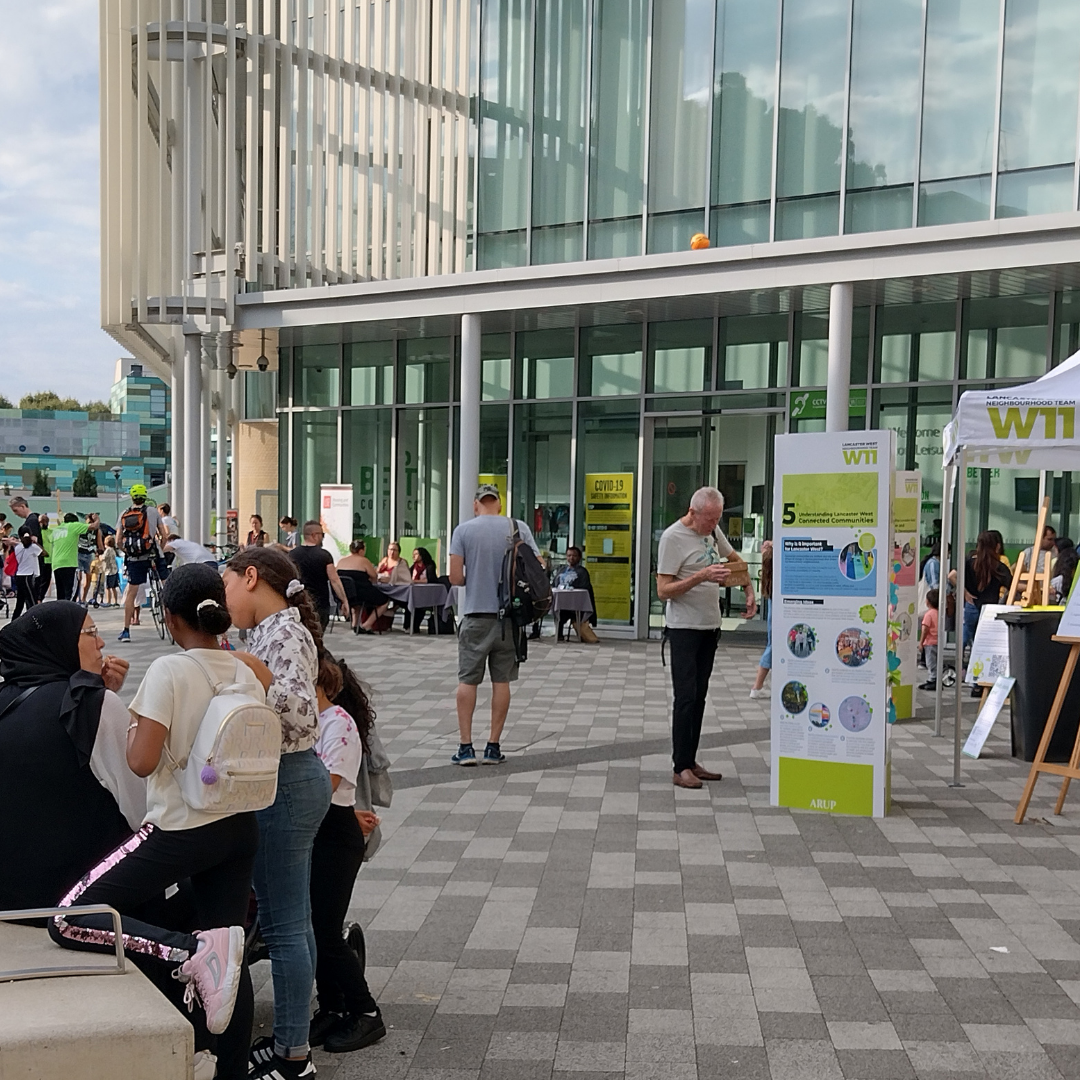
The Lancaster West Neighbourhood Team worked with 1,800 residents to co-design a concept for the estate and broader neighbourhood, outlining a masterplan to provide resources, increase sustainability, and utilise assets to meet local needs to improve outcomes.
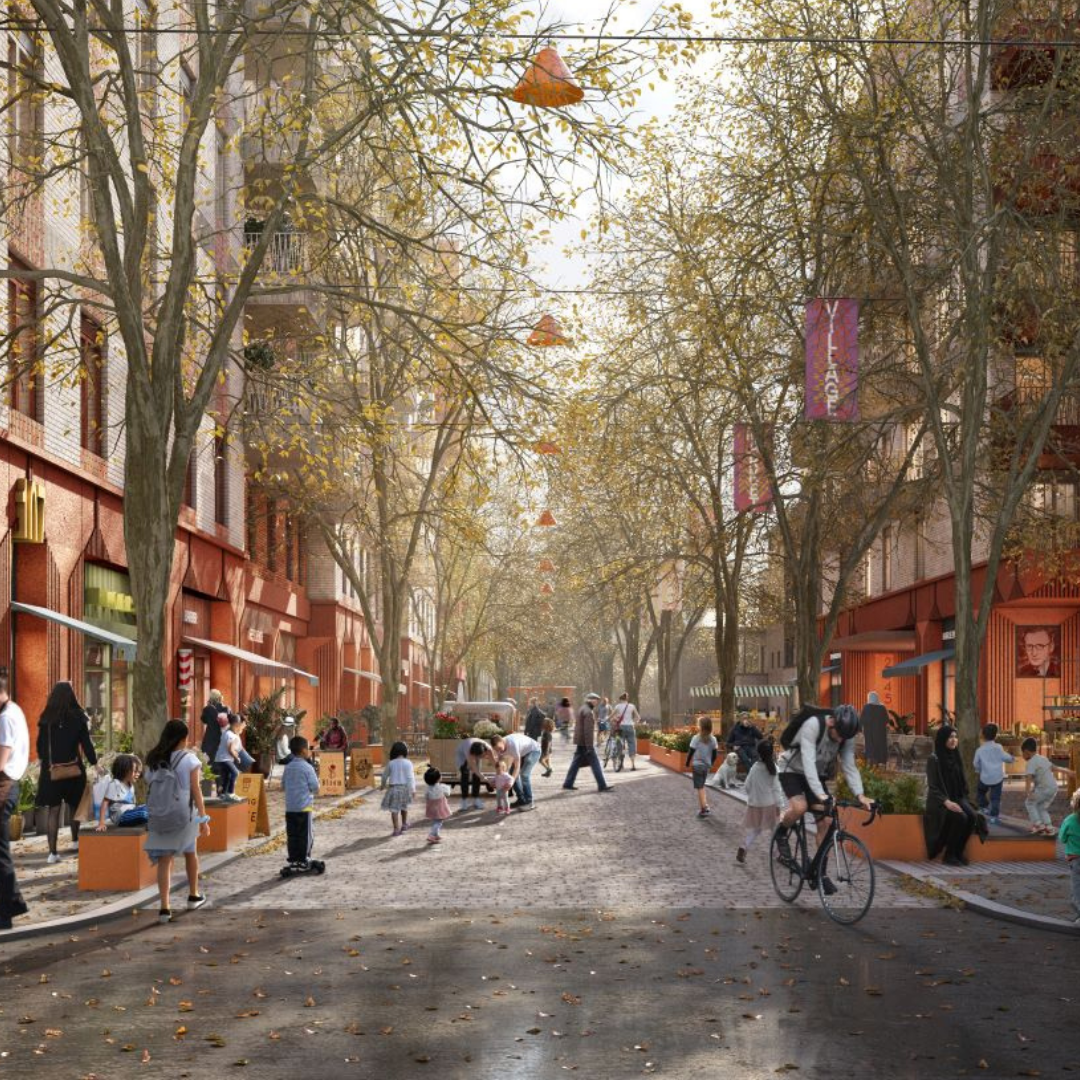
Aberfeldy New Masterplan is a 20-year regeneration scheme in East London developed by a joint venture between EcoWorld London and housing association Poplar HARCA. A new masterplan was submitted in 2021 which focuses on stakeholder engagement and the community being able to co-design.

This 12-month collaborative design process through Sustrans’ Street Design Programme saw the project team work with the local community of Wick and stakeholders between September 2019 and October 2020 to develop an ambitious concept design for the High Street, Market Square and the intersection of Bridge Street and nearby lanes.
‘Woolwich Speaks’ is a community-led project celebrating the area’s street life and exploring its past, present and future through poetry, film and public art. The work was created through a programme of community and local partner engagement and the new commissions were launched to the public in August 2021.
The Pineapple for Activation: Re-Store
Coal Drops Yard collaborated with Store Projects to create a space that not only showcased design and craftsmanship, but also supported learning and access to the design industry, offering school time and after-school clubs where students learn to improve their product-making and create portfolios, working alongside practising artists and designers.
Hypha Studios is a new charity that provides free-of-charge studio and exhibition space to creatives in vacant commercial and high-street locations. Broadwalk centre is home to the local library and the bingo, but also many empty units. Since August 2021, Hypha Studios has managed 5 units, hosting 9 local artists selected via open call. They have brought photography, poetry, performance, visual and digital arts into Broadwalk.
Culture Palace brings together local cultural and creative enterprises in a 300sqm temporary hub, activating space at the heart of Palace Gardens Shopping Centre. For 12 months, this colourful meanwhile destination is home to a performance and exhibition space, museum and bookshop, as well as a café and activity areas. The project is part of D-P-Q’s wider Palace Pop-Ups initiative, which includes Field by Hive – a creative workshop space that sells handmade goods.
Elephant Stores is a home grown, two-year, multi-use meanwhile space at Elephant Park – a place to eat, drink, socialise, work, shop – situated at the heart of Lendlease’s 3000-home regeneration scheme in London’s Elephant & Castle. The place is brought to life by three hyperlocal entrepreneurs: Café/bar Little Louie, SoLo Craft Fair and Fix Your Cycle.
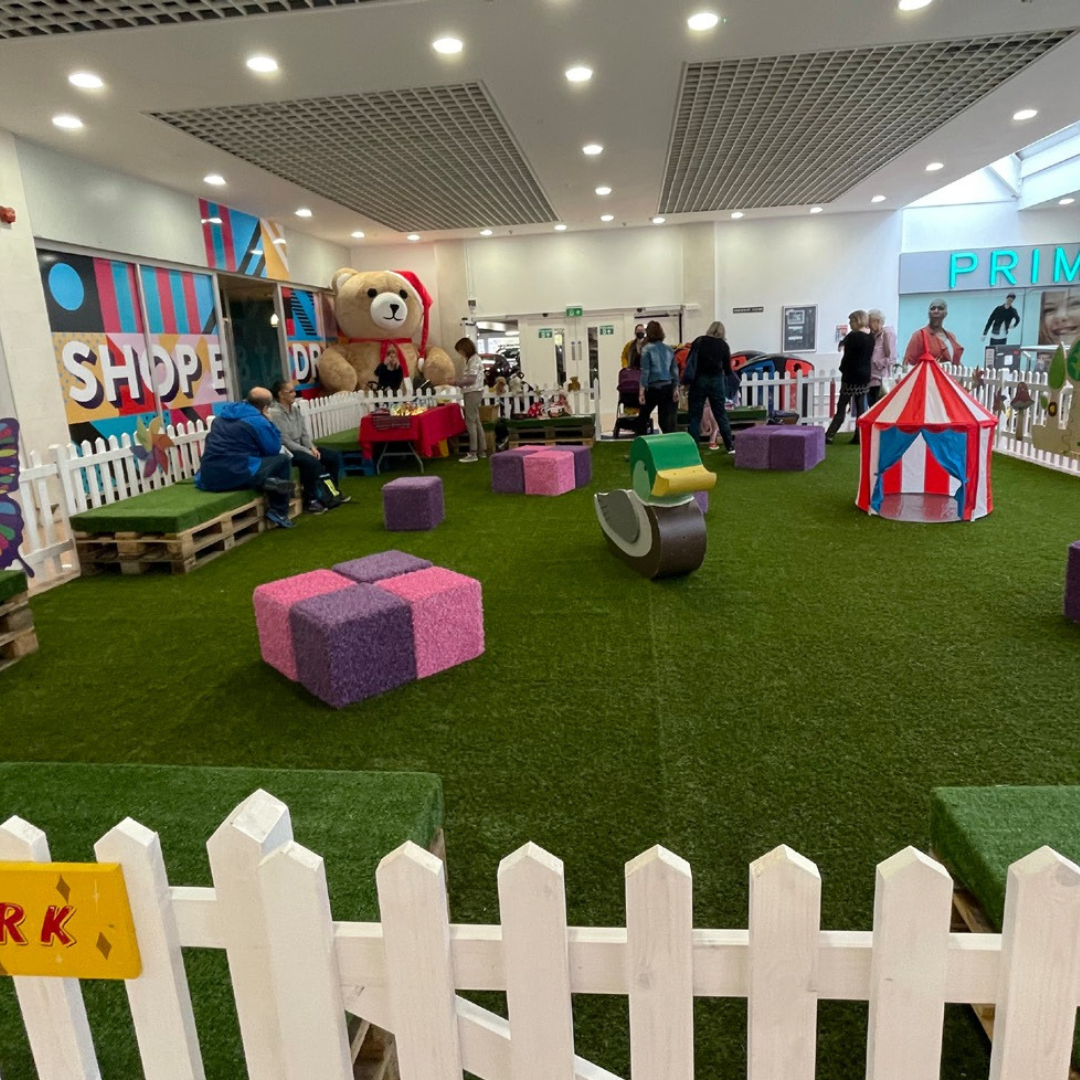
With no budget and through the reuse of materials, an empty space was transformed into an inclusive, free, safe and comfortable family hub with some elements to encourage play and the flexibility to hold meet-ups including Sing & Sign, breastfeeding groups, pushchair parking and sufficient seating.
The Pineapple for Creative Retrofit
Enfield Council has collaborated with Bloqs to facilitate moving their premises through the adaptive reuse of a former vehicle testing plant. The result is the largest open-access workshop in Europe with state-of-the-art facilities from woodwork and metalwork, to fashion and sewing, engineering, and spray finishing with hi-tech machinery, as well as other resources and services such as courses and classrooms.
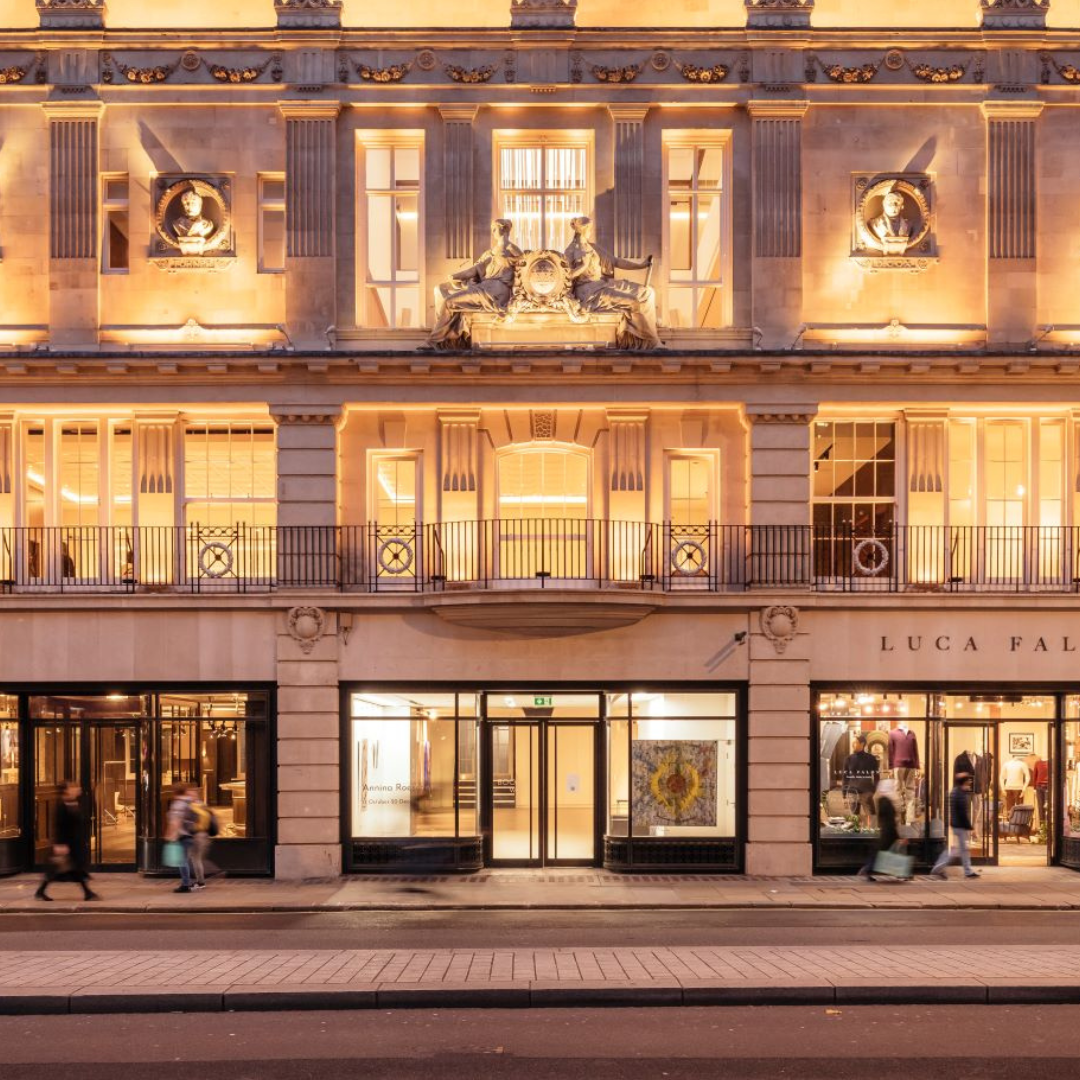
BAFTA’s Piccadilly headquarters are important to London’s west-end and a jewel in The Crown Estate’s St James’s portfolio. This renewal makes BAFTA fully accessible physically and culturally, as a creative centre for the film, TV and games industries and a central hub for BAFTA’s UK-wide, and global, learning and new talent development programme.
This transformation of the Grade II listed Rugby Radio Station into a 6FE secondary school lies at the heart of this wider development of 6,200 homes. The C Station building has been restored, alongside two new teaching blocks, a sports hall and outdoor sports facilities. Dating back to 1925, the Rugby Radio Station site was once a communications hub of global significance, and is a well-loved local landmark.
These two listed buildings form part of the wider Kampus development, a PRS scheme and garden neighbourhood for the city. Throughout the design process, the number one priority was to retain the qualities of the existing mill buildings as they were transformed into homes. Where interventions were inserted into the building, a clear relationship exists between old and new allowing this chapter of the buildings to be read clearly in years to come.
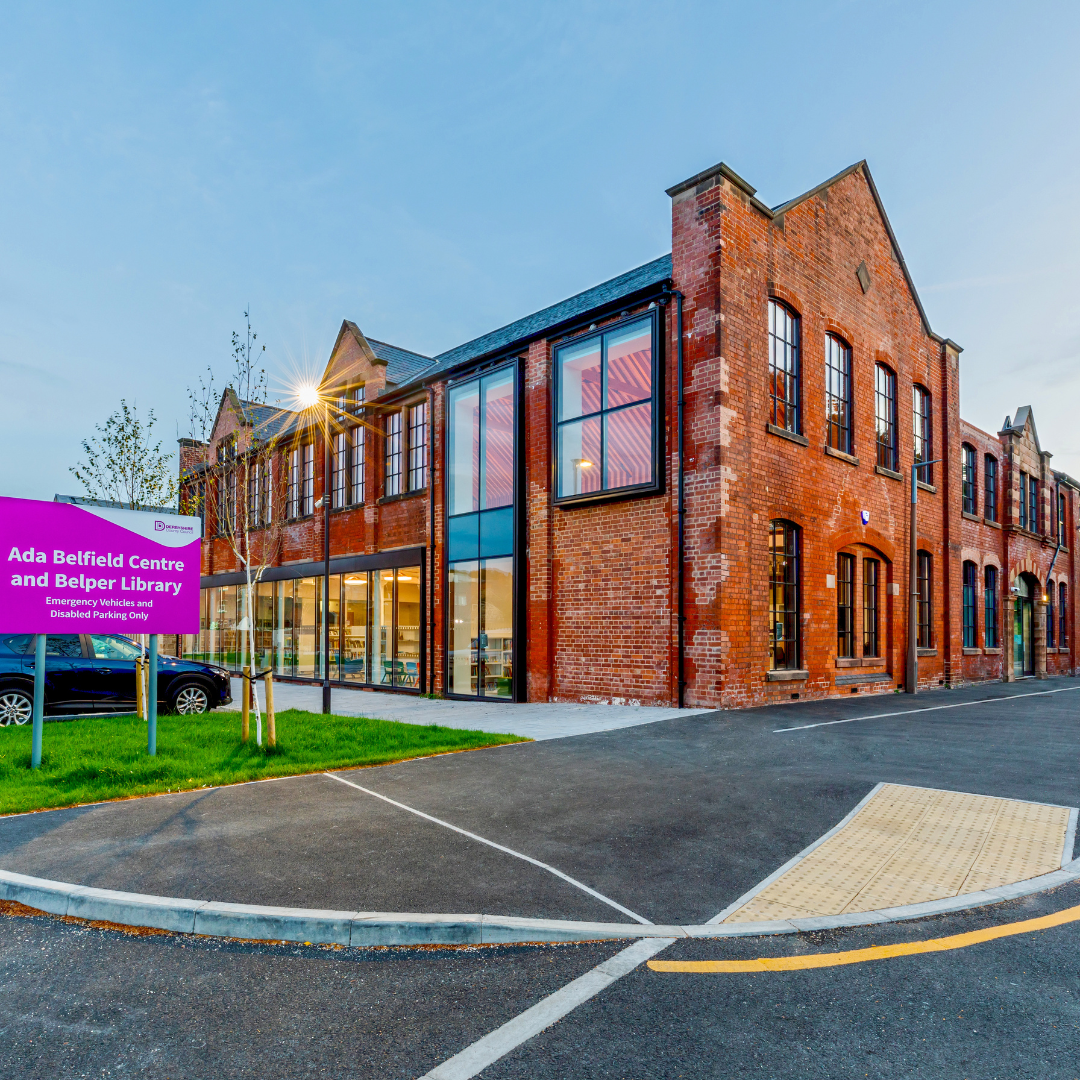
The former Thornton’s factory is repurposed and extended to provide this community with high-quality residential care and a new public library. By re-purposing and extending the building’s spaces, the historic character embodies local heritage whilst dispelling the stigma commonly associated with buildings for the elderly.

The refurbished Town Hall consolidates staff into one location and frees up vacated sites for much needed housing. Cellular offices are replaced with open-plan, agile workspaces to promote collaboration, wellbeing and productivity. A flexible foyer accommodates everything from collaborative working to evening events. An interactive water feature creates a fully accessible forecourt while encouraging children to play.
Station South is a destination cycle café-bar, bike workshop in Levenshulme, Manchester that also incorporates flexible public space for co-working, retail and events as well as an urban garden. The project is led by social entrepreneurs, Station South CIC, who wanted to see the restoration of the dilapidated Victorian railway station, Levenshulme South.
The Pineapple for Future Place
One Waterloo replaces the Elizabeth House building with a workspace and transforms the user experience in and around one of the UK’s busiest rail stations. Two new squares, a pedestrianised shopping and dining street and a green 200m promenade offer more permeable, accessible and enjoyable routes to connect the station to the South Bank, Leake Street and York Road.
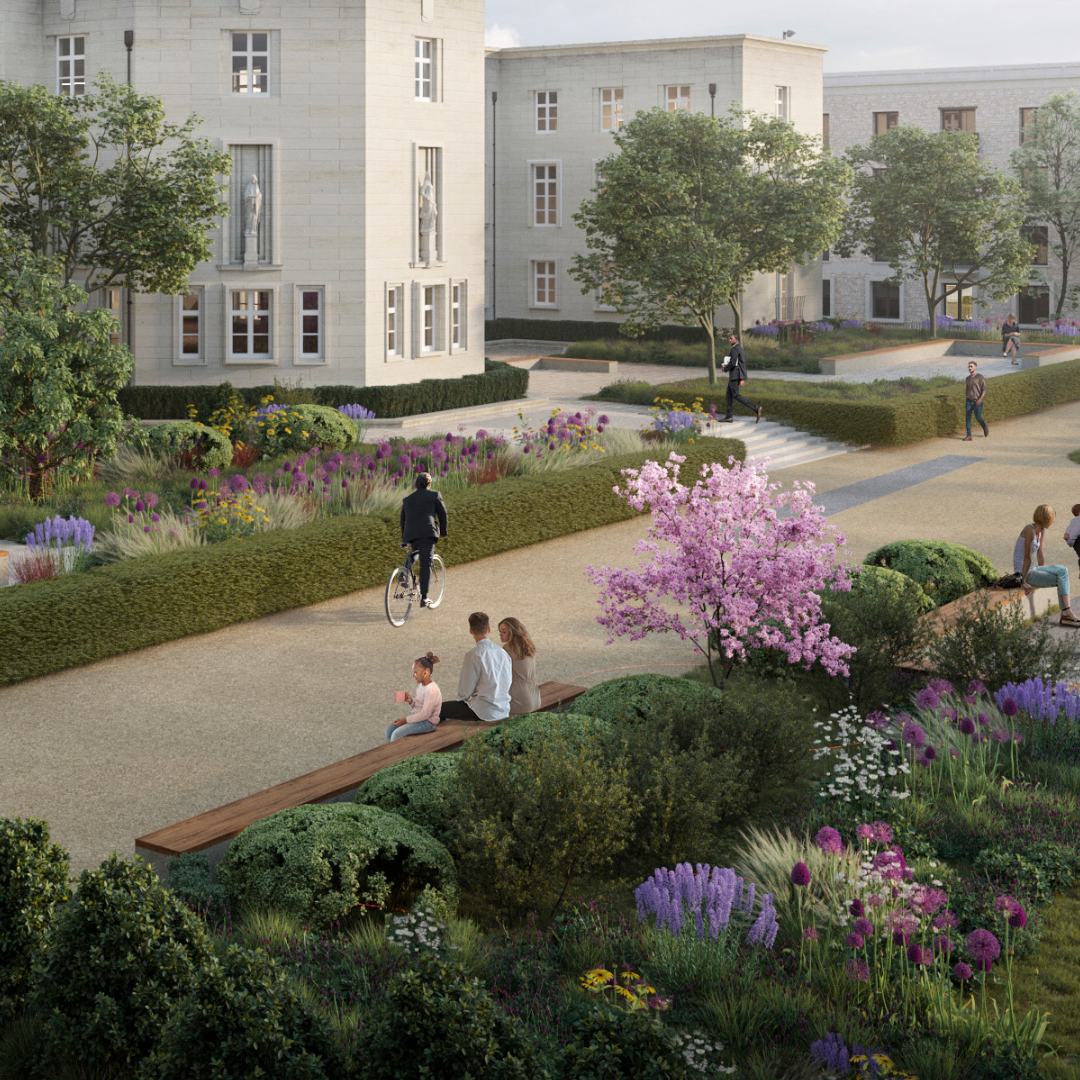
Five residential blocks consisting of 433 high-quality homes for local people, with 50% affordable will be created on land within the setting, but excluding, the Grade II Listed Town Hall and Assembly Hall. Former car parks will be transformed into residential, the New Civic building will have a restaurant and café, and a nursery and commercial spaces will be delivered which, along with the existing Assembly Hall, will add to this mixed-use place.
This project regenerates, diversifies and expands the 57-acre Heath Business and Technical Park in Runcorn. The masterplan includes 616 homes including affordable housing, offices, a conference centre, affordable artists’ studios and a Vertical Farm. The residential mix ranges from one-bed flats to five-bed houses, senior living accommodation and 20-bed extra-care facility.
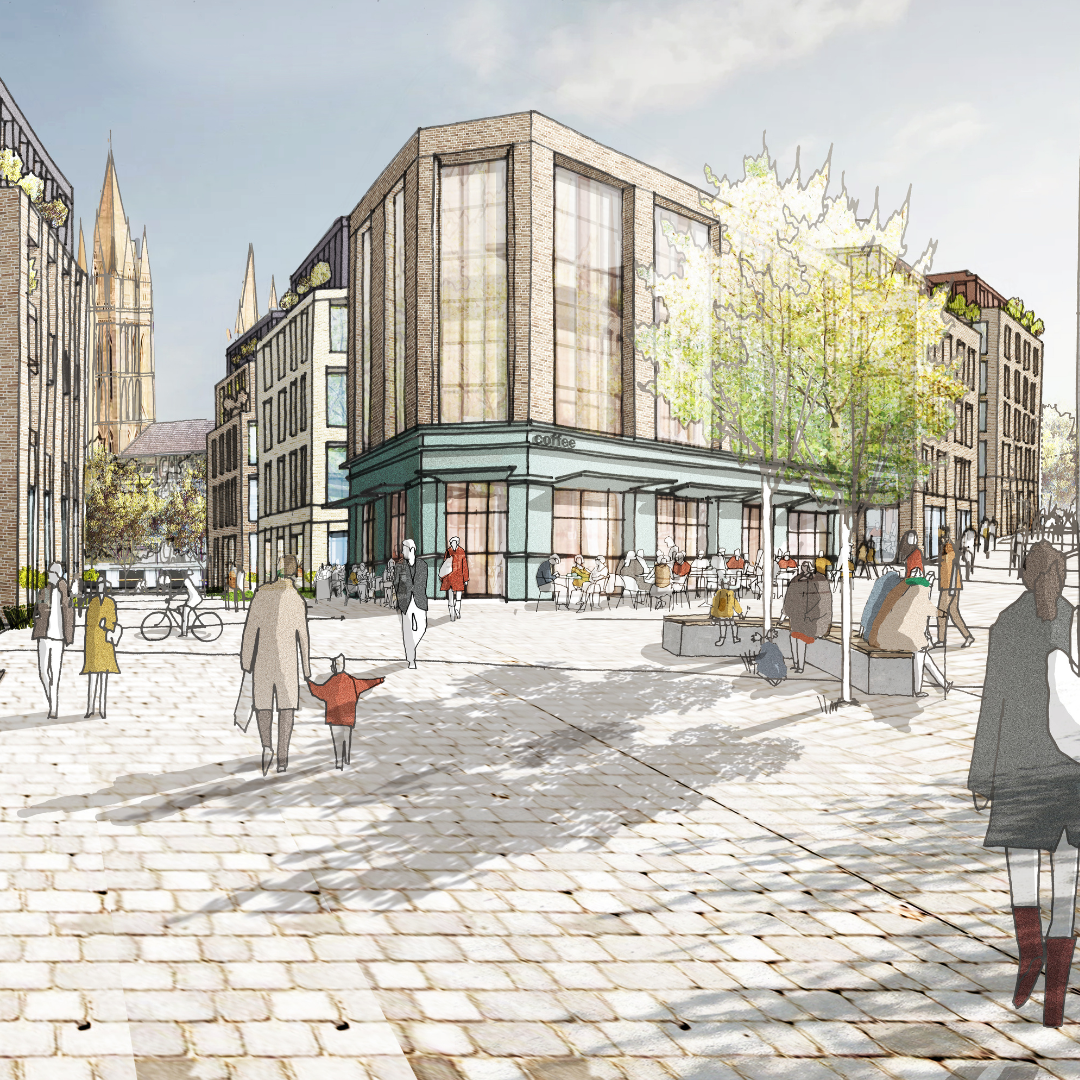
The Pydar regeneration and masterplanning project is located next to Truro city centre, on four hectares of publicly owned brownfield land. Building on the 15-min city principle, the £177m scheme includes 300+ new homes and connect Truro’s historic city centre with the River Allen. The new pattern of streets and massing will retain, improve and create views to key heritage assets, such as Truro Cathedral and the Viaduct.
The Honey Monster cereal factory site will be transformed into 1,997 homes, a creative film hub and light industrial units. New public realm includes public access and a proposed dock extension to the Grand Union Canal with public trails for pedestrians and cyclists connecting the community to a wider network of green public spaces.
Riverside Sunderland will be a sustainable carbon neutral development created by zero-waste construction processes using MMC. Decentralised energy networks will support decarbonisation. Part of a masterplan that will double the resident population of Sunderland city centre from 2,500 to 5,000 and increase employment by 50%, when complete, 10,000 people will work at Riverside Sunderland. New leisure spaces include music venues such as the Auditorium and £80m Arena and a new digital library, described as the UK’s best.
Plans for this 11.5ha waterfront site will deliver 1,000 new homes, including affordable housing, two GP practices, a dental practice, nursery, flexible work and community spaces as well as an art-house cinema and extensive leisure facilities. A new 400-space cycle hub and over 1,700 residential bike-parking spaces, will encourage low-carbon transport and support wellbeing.
This is a strategic rethink of Yate, a historic town North of Bristol. The town centre is diversified to provide a wide range of shops, workhubs and apartments. The existing GP surgery and community facilities are retained and enhanced with quality outdoor spaces, and new greened streets strengthen connections with the town’s main hubs; the bus station, the train station, the River Frome and the new Green Loop around the perimeter of the town.
The Pineapple for Future Place: Public Realm
This £50million investment in the public realm of 13 streets and spaces around the city's retail heart aims to make the centre healthier, greener, safer and more inclusive, ensuring Newcastle remains a place where people want to visit, shop, cycle or live.
London’s Great Ormond Street Hospital is one of the world’s best-known and respected children’s hospitals. However, the streets surrounding the hospital are failing both it and the community. This vision for a reimagined Great Ormond Street is creates a street rebalanced for people – a green and friendly public place to spend time in.
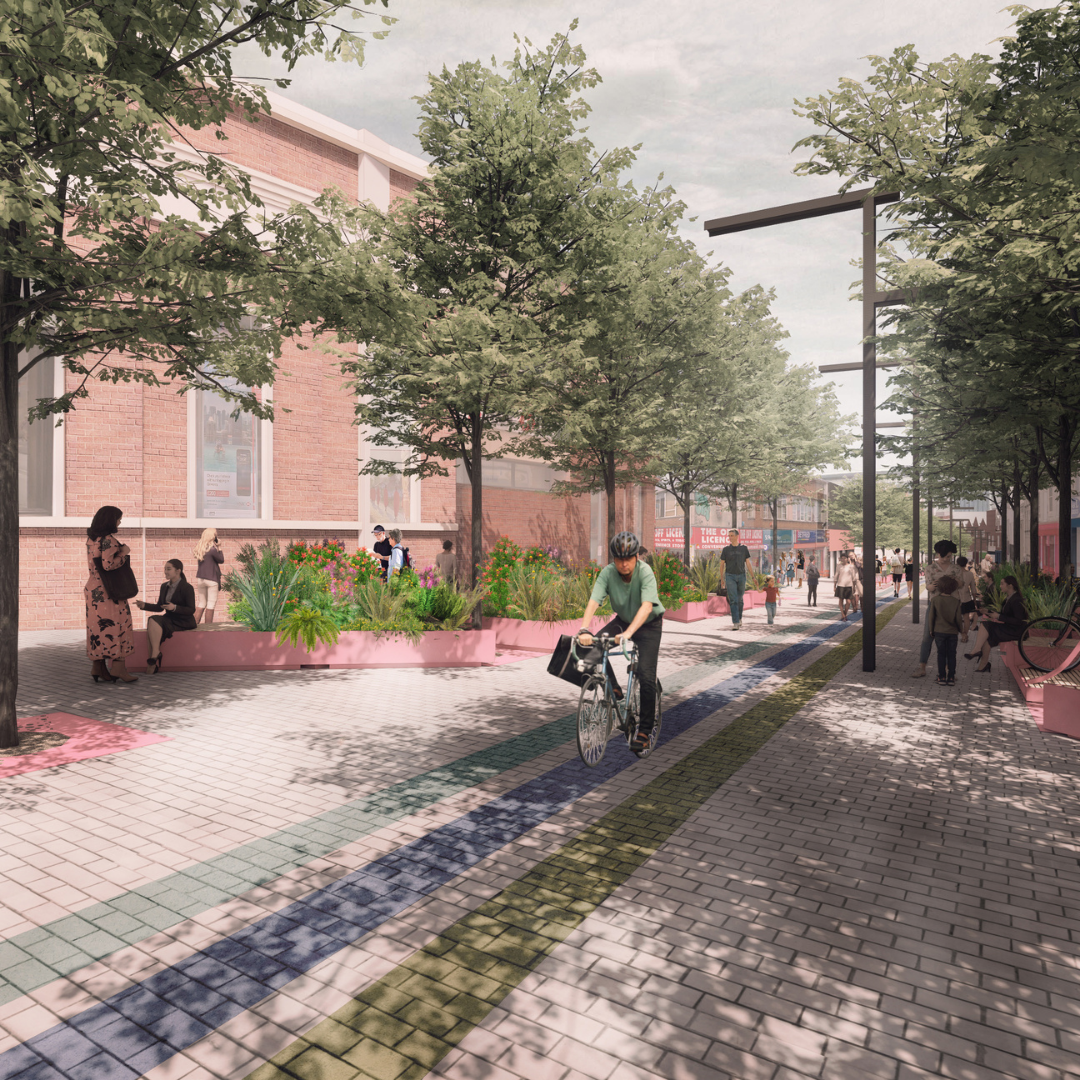
East Street is one of Bristol’s most historically significant streets centred within Bedminster. With the planned development initiating an expected population increase, this new strategy proposes people-friendly streets , local art-led projects, the relocation of bus services, active transport connections, the restoration of listed buildings and urban greening.
The Marlborough Sports Garden is a rare outdoor space providing much-needed access to physical activity, sport, and leisure pursuits. This plan will continue the focus on the local public health agenda, and the move to mitigate against childhood obesity and inactivity.
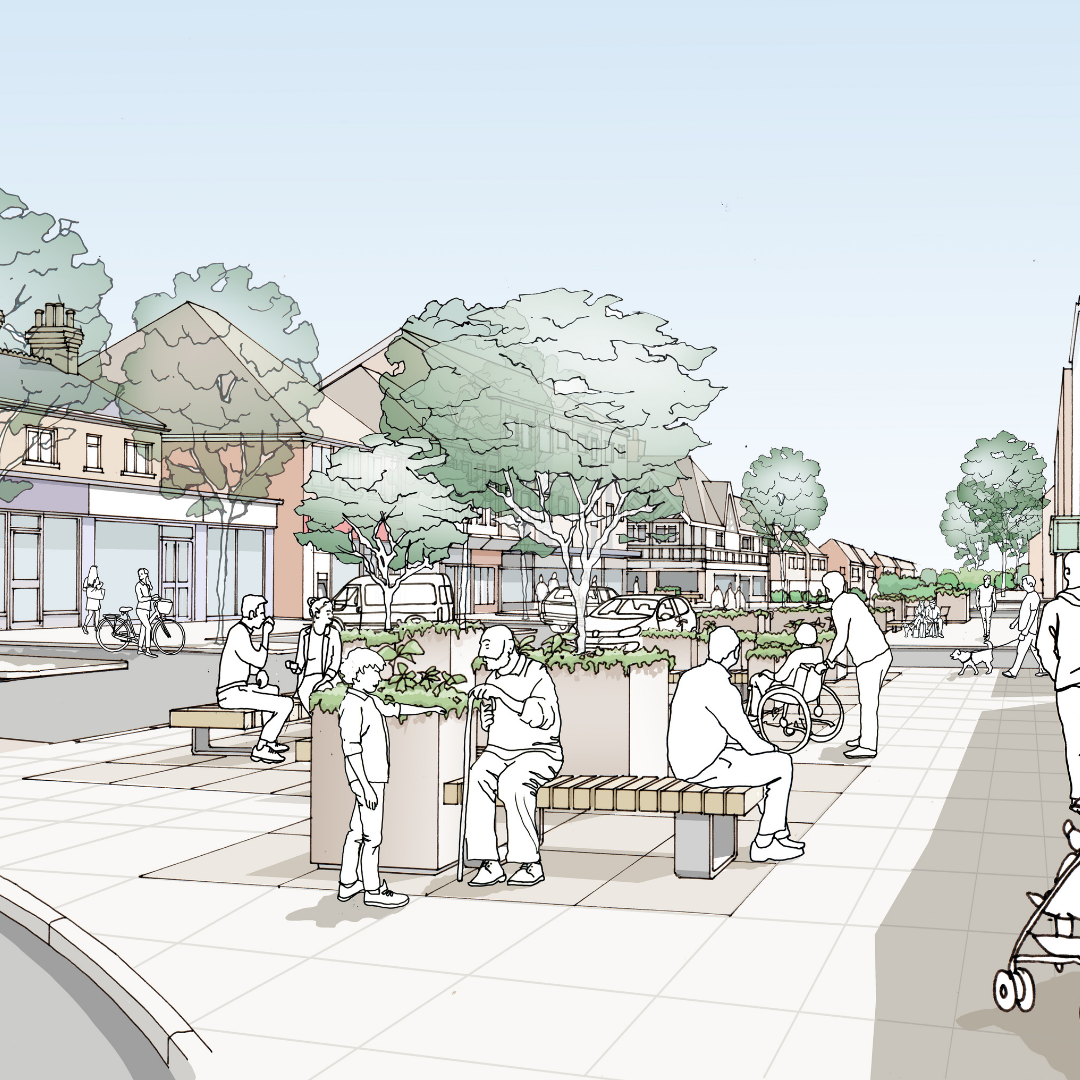
Balsall Common is a well-loved place to live but has few attractions. Inspired by the 15-minute neighbourhood concept, this proposal is to reinvent Balsall Common as a place not only to shop, but as a place of encounter, community activity, social interaction, business and living.
The Pineapple for International Future Place
The industrial remnants of the Flak steel factories are transformed into Italy's largest urban regeneration project scaling up to 1.5 million square metres. MilanoSesto, just north of Milan, combines nature with plazas, 45 hectares of greenery and public spaces, retail, flexible offices and a multitude of residential spaces. The key elements of the masterplan include the Unione and Concordia districts.

This new development, located in Haarlemmermeer, is where the countryside and the city of Amsterdam merge, creating an opportunity to connect regional green and cultural infrastructure, to build a future metro line and create liveable densification in the vicinity of mobility hubs.

The Putat Jaya sub-district in Indonesia used to be a mix of local businesses, however with changing government policies the vibrant life of the neighbourhood suffered a drastic change. This project aims to regenerate the district and to uplift the voices of the people, to create fair design standards and guidelines whilst also focusing on social and economic issues.

This 700ha site in west Dublin covers three regeneration areas and asks how a mixed-use urban quarter can be established as an extension of the city using a plan-led evidence-based approach. Currently the City Edge Study Area sustains 25,500 jobs across 1,500 businesses and contributes €1.98bn per year to the economy.
If you love what we do, support us
Ask your organisation to become a member, buy tickets to our events or support us on Patreon
Sign up to our newsletter
Get updates from The Developer straight to your inbox
Thanks to our organisation members
Become a member
© Festival of Place - Tweak Ltd., 124 City Road, London, EC1V 2NX. Tel: 020 3326 7238
